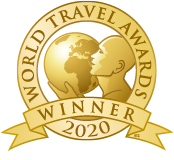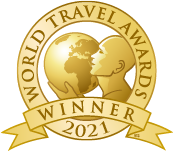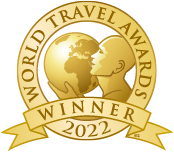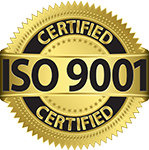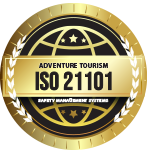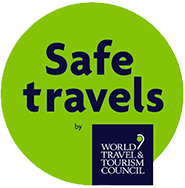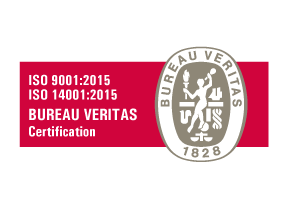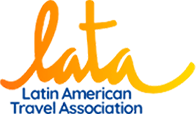
Alternative Inca Trail Treks: Explore Unique Inca Pathways on an Alternative Machu Picchu Hike!
Remote Andean Treks to Machu Picchu
We are the local experts for all alternative treks to Machu Picchu!
The extensive Inca Trail network of roads called The Qapac Ñan includes a number of original Inca trails that offer impressive trekking experiences to Machu Picchu and are much less crowded than the Classic Inca Trail. Alternative Inca Trail Treks refers to any trek that does not include a section of The Classic Inca Trail, but will still take you to the iconic Machu Picchu, along ancient pathways.
Alternative treks to Machu Picchu provide spectacular hiking through the Peruvian Andes, following original ancient Inca pathways. These alternative Inca Trail hikes are easier to book because they don´t require permits, are more available with Peru travel agencies, are equally beautiful, rich in Andean history, and way less crowded. Here is a rundown of the alternative trekking routes to Machu Picchu for your Peru adventure packages. If you have heard of The Salkantay Trek, or have dreamt about hiking The Ausangate Trek, or are looking for a cultural element and local interaction on your trekking experience along the Lares Trek to Machu Picchu, Valencia Travel has got you covered!
Our Alternative Inca Trail Treks include the following: The 5 Day Salkantay Trek, The Private Salkantay Trek to Machu Picchu, The 8 Day Salkantay Trek to Machu Picchu, with acclimatization days in Cusco, The Choquequirao Trek, The 9 Day Choquequirao Trek to Machu Picchu, The Lares Trek, the 7 Day Lares Trek with acclimatization days in Cusco, The 7 Day Ausangate Trek with Rainbow Mountain and Machu Picchu and the 10 Day Ausangate Trek with Rainbow Mountain, Machu Picchu and acclimatization days in Cusco, The Vilcabamba Trek, and The Moonstone Trek to Machu Picchu. These Alternative Inca Trail Treks are some of the best treks in the Cusco region, don´t require permits, and will still get you trekking to Machu Picchu!
What You Need To Know About Alternative Inca Trail Treks:
- Alternative Inca Trail Treks cover from approximately 42 kilometers (26 miles) to 70+ KM depending on the trek and how many days you prefer to hike!
- Alternative Inca Trail's difficulty level ranges from moderate to challenging due to the different altitudes and terrain on the different Treks. Find out more in our "Alternative Inca Trails - All You Need to Know" section.
- You can get really off-the-beaten path on an alternative Inca Trail.
- Enjoy hiking in the stunning natural beauty of The Andean Region.
- Alternative Inca Trails do NOT require a permit, like the Inca Trail!
- Discover lesser-visited Archaeological Sites.
- Avoid the Crowds.
- All Alternative Inca Trail hikes are led by authorized guides to ensure safety and compliance with safety regulations.
Valencia Travel Cusco is committed to sustainable tourism and offering an unparalleled service to make sure your Alternative Inca Trail Trek to Machu Picchu is beyond extraordinary.
More Information? Alternative Inca Trails - All You Need to Know!

The Salkantay Trek is just one of our spectacular Alternative Inca Trails!
The Salkantay Trek is considered to be one of the best trekking routes in the world! The Salkantay Trek offers spectacular scenery passing through a number of different ecosystems; from desert to cloud forest, and high mountain passes, to turquoise, glacial lagoons!
Alternative Inca Trail Treks Information
Alternative Inca Trail Treks FAQs
+Planning and Booking Your Alternative Inca Trail Trek
+How Cold is The Salkantay Trek?
Temperatures on The Salkantay Trek to Machu Picchu all year round, follow a similar pattern. The days are warm, well above 20°C (70/80°F), and the evenings and early morning are cold (around 0°C) and sometimes even below 0°C degrees. Temperature fluctuations are normal as we pass through different microclimates during the ascents and descents of the Salkantay Trail. A -15°C is recommended for the trek remember it is always better to be too warm than too cold! If you are still worried about how cold the Salkantay Trek gets, the key to keeping warm is layered clothing. (See our Packing List details).
Menu Dropdown Maps, Altitudes, Hiking Distances and Practical Information about Alternative Ina Trail Treks
+How Difficult is The Salkantay Trek?
We would be lying if we said Salkantay Treks were easy! There are a number of factors that affect the difficulty of the Salkantay Trek to Machu Picchu. The highest point of The Salkantay Trek elevation reaches a whopping 4,630 m/15,190 ft. High altitude can make breathing difficult and increase fatigue, especially if you have not acclimatized properly prior to the start of The Salkantay Trek. The tricky terrain including steep ascents and descents, can also be an issue, as well as the distance hiked each day and the weather conditions. All in all, we would describe The Salkantay Trek as a moderately difficult trek.
How Hard is The Salkantay Trek?
The Salkantay Trek to Machu Picchu is not the easiest trek to the ancient Inca citadel. It is also not the hardest trekking route in the Cusco region. Generally speaking, the first two days are the toughest and the 3rd and 4th days are the longest. The 5th day is at Machu Picchu on the 5 day Salkantay trek and is relatively easy. However, if at any point you find The Salkantay Trek too difficult, no need to worry! Our Salkantay Treks include an emergency mule that you can ride if you are struggling from the altitude 😊
How High is The Salkantay Trek?
The highest point on The Salkantay Trek to Machu Picchu is The Salkantay Pass found at 4,630 m/15,190 ft. This can cause altitude sickness and symptoms such as headaches, fatigue, and getting out of breath. The lowest point on The Salkantay Trek is 1,800 m /5906 ft at The Hydro-Electric Plant on day 4.
How Long is The Salkantay Trek?
The Salkantay Trek to Machu Picchu is a 66-kilometer / 41-mile trek, approx. There are various different routes that you can take, depending on how many days you want to walk and the company you’re hiking with. Some Salkantay Treks include the side trip to Humantay Lake, such as Valencia Travel. This optional side trek adds an extra three hundred meters of ascent and descent to the first day’s hike. However, you will witness incredible scenery and this spectacular turquoise lake.
Valencia Travel´s Salkantay Trek is slightly longer than the regular 5 day Salkantay Trek. Our version of The Salkantay Trek to Machu Picchu is 67-kilometers/ 41-mile approx. This is because we include the side trip to Humantay Lake on the first day. This optional side trek is with some added ups and downs but the reward waiting for you at Humantay Lake is Mother Nature at her magnificent best. The incredible scenery and spectacular transparent, turquoise lake will humble you in the most amazing way on our Salkantay Trek to Machu Picchu.
How Many Miles is The Salkantay Trek
The Salkantay Trek to Machu Picchu is approximately 41-miles. There are some option side treks along The Salkantay Trail, including to Humantay Lake or Llactapata archaeological site. The distances on each day of The Salkantay Trek are different every day, and like all treks in Peru, some are challenging, and some are easier. The altitude of Salkantay mountain is higher than other mountains in Cusco, Peru, which makes the second day of The Salkantay Trek, one of the hardest days as we cross the Salkantay Pass.
How Much To Tip On The Salkantay Trek?
The Salkantay trek is one of the most popular treks in the Cusco region that will take you to Machu Picchu. The issues around tipping are complex in that Peru doesn´t generally have a tipping culture. However, with touristic services including trekking, tips are expected. This includes tipping for The Salkantay trek to Machu Picchu. Salkantay Trek tipping includes your trekking guide, muleteers, cooks, and transportation to and from Cusco to the trailhead. This is a great way to show appreciation for their hard work in sometimes difficult conditions.
As a general rule, you should tip your guide around $10 to $20 USD per day. If you had an incredible experience, you can tip more. Porters /muleteers carry heavy loads, so tipping them is in our opinion, is a nice thing to do. Tip each porter around $5 to $10 USD per day. Tipping the cook and other support staff is also appreciated. Plan on tipping around $5 to $10 USD per day for them. If you’re on a group trek, the total tip is usually pooled and distributed among the staff. Try and take small denominations of Peruvian Soles (PEN) or US dollars for tipping on The Salkantay Trek.
Remember that these are very general guidelines. You can adjust the exact amount based on your satisfaction with the services. It is important to remember that tipping is NOT obligatory, but is expected on your Salkantay Trek experience!
How to Prepare for The Salkantay Trek
The best preparation for hiking the Salkantay Trek is to acclimatize in Cusco for at least two days before the trek begins. This gives your body time to adjust to the high elevation before the physical exertion of the Trek. Make sure you get plenty of sleep, drink plenty of water, and be sure to drink coca tea which helps with acclimatization. Also, consult your doctor at home about using Diamox to help your body adjust if you think it will be beneficial.
Also, being moderately fit to begin with is an important factor. You should be able to walk at least 20 kilometers (12.5 miles) daily, as a general rule. Any cardiovascular workouts at home will improve your fitness for The Salkantay Trek.
How to Train for Salkantay Trek
The Salkantay Trek is considered a moderate hike. The challenge along the Salkantay Trail comes from the ascent and descents involved, the distance you cover on day one, and the altitude at which you’re hiking.
The toughest days by far on The Salkantay Trek to Machu Picchu are days one and two. Not only do you gain elevation you also hike the turquoise waters of Humantay Lake. Because you’re hiking at altitude, you will soon realize how thin the air is. If you’re relatively fit and can Trek 20 kilometers (12.5 miles) per day, you shouldn’t have any issues. Remember the first rule of hiking at altitude, if you are out of breath, you are hiking too fast! Slowing down is an essential aid to trekking at altitude.
Acclimatization is also vital for the Salkantay Trek. Spend at least two days in Cusco before the Salkantay Trek for acclimatization purposes. Ask your Travel Clinic for Diamox if you are concerned– this medication helps your body cope at high altitudes.
Is Salkantay Trek Worth it?
The Salkantay Trek is consistently voted as one of the top 25 treks in the world. With high-altitude lakes, snow-capped mountains and awe-inspiring views to Marvel at, The Salkantay Trek to Machu Picchu Trek is one of the lesser touristic routes to reach the Inca citadel. The Salkantay Trek is not what you would call a walk in the park.....it is fabulously challenging! You will see some of the most breathtaking scenery there is and will visit high-altitude lakes such as the splendidly turquoise Humantay Lake. Another major highlight is the view of the immense Salkantay Mountain itself. This snow-capped peak stands at a massive 6,271 meters (20,574 feet) above sea level and owns the skyline with its sheer size. The Salkantay Trek is the perfect digital detox for trekkers who are searching for a disconnection from technology and become at one with nature and the environment. So, is The Salkantay Trek worth it? Damn right, it is!
Is The Salkantay Trek Dangerous?
The Salkantay Trek is not considered a dangerous trek. Like any trekking expedition, you should take the correct precautions and be well prepared. However, like any outdoor and adventure activity, there are risks to consider, especially when trekking in The Andes! Certain sections of the Salkantay trek are steep and rocky, which can make it a challenge to trek. The Salkantay trek passes through high altitudes, especially at the Salkantay pass (4,600 m). Altitude sickness is an issue if you have not prepared adequately for the Trek, spending a few days prior to the Trek at elevation. The weather in The Andes is unpredictable, with possible rainfall and cold temperatures all year round. Of course, wet season runs from December to March approximately and we do not recommend Salkantay Trek during this season. As with any trekking activity, there is always the possibility of minor accidents, such as sprains or falls. This is why we take an emergency horse, should evacuation from the Salkantay Trek be necessary.
Is the Salkantay Trek Hard?
The Salkantay Trek is considered a moderate Trek. Generally speaking, the first two days are the toughest and the 3rd and 4th days are the longest. The 5th day is at Machu Picchu on the 5 day Salkantay trek and is relatively easy. However, if at any point you are finding The Salkantay Trek too difficult, we include an emergency mule that you can ride if you are suffering from the altitude. The Trek also includes a number of ascents and descents on sometimes rocky terrain, so decent walking boots are essential.
Family-Friendly Travel - 5-Day Salkantay Trek
The Top Kid Friendly Activities in Peru
Peru offers a wide range of kid-friendly activities that can make your family trip both fun and educational. If your little ones love trekking, and you are looking for Guided hikes in Peru, then Peru could be the best option for you, including our guided tours of Salkantay to Machu Picchu, amongst any of our Andean mountain expeditions. Here are some top options:
- Machu Picchu: While the 4-day hike itself might not be suitable for very young kids, a visit to Machu Picchu is a great way to introduce children to history and culture on their Cusco adventure activities. They'll be amazed by the ancient ruins and stunning scenery. If your kids love hiking, then our five-day Salkantay Trek itineraries could be perfect for your family as we can tailor these Salkantay treks to your specific needs.
- Cusco: The city of Cusco is filled with history and culture. Visit the Plaza de Armas, explore Inca ruins, and enjoy the local markets. Kids can learn about Inca history and see the fusion of Inca and Spanish architecture.
- Sacred Valley: Explore the Sacred Valley of the Incas. Visit Pisac and Ollantaytambo to see more ruins and experience local culture. The wide-open spaces are perfect for kids to run around and explore.
- Nazca Lines: Older kids with an interest in history and mysteries might enjoy a flight over the Nazca Lines. These massive geoglyphs in the desert are a fascinating sight.
- Amazon Rainforest: A family adventure in the Amazon jungle can be incredibly educational and fun. Kids can see unique wildlife, learn about the rainforest ecosystem, and experience boat rides and jungle walks.
- Arequipa: The Santa Catalina Monastery in Arequipa is like a mini city within the city. Kids can explore its narrow streets, colorful buildings, and historical rooms.
- Ballestas Islands: Take a boat tour to the Ballestas Islands to see penguins, sea lions, and a variety of bird species. It's like a mini Galapagos experience.
- Beaches: Peru has some beautiful beaches. Mancora, for example, is a family-friendly destination with warm waters and plenty of activities like swimming, surfing, and sandcastle building.
- Local Markets: Visiting local markets can be a cultural experience for kids. They can see traditional Peruvian products, taste local foods, and engage with locals.
- Chocolate Making: Peru is known for its delicious chocolate. Consider taking a chocolate-making workshop where kids can learn about the process and make their own treats. Also visit a chocolate or coffee farm on our Five-day Salkantay Trek itineraries, which will pass through Santa Teresa, a lower-elevation cacao growing region on the Salkantay Trek.
- Inca Textile Workshops: In Cusco and the Sacred Valley, you can find textile workshops where kids can learn about traditional Inca weaving techniques and even create their own textiles.
- Parque de la Reserva (Magic Water Circuit): In Lima, this park features a series of fountains with colorful lights and music. It's a mesmerizing and entertaining experience for kids of all ages.
- Cusco Planetarium: A visit to the planetarium in Cusco can be an educational and interactive experience for kids, where they can learn about Inca astronomy and the night sky on their Cusco adventure activities.
- Peruvian Cuisine: Let your children explore Peruvian cuisine. Encourage them to try ceviche, empanadas, and other local dishes. Many Peruvian restaurants are family-friendly. You could even try our culinary experiences on the Salkantay Trek along your Salkantay trek for a unique experience.
Remember to adapt your activities to your children's ages and interests to ensure a memorable and enjoyable experience in Peru. Our five-day Salkantay Trek itineraries can be customized for all family members, making sure all interests are catered for during your Salkantay trek and Machu Picchu adventure tours.
The Best Kid-friendly Hotels and Child care Options in Peru
Peru offers many family-friendly hotels and childcare options to make your Peru tour trip or Guided hikes in Peru, more enjoyable and stress-free. Here are some recommendations for kid-friendly hotels and childcare options in Peru for your Machu Picchu adventure tours, Salkantay to Machu Picchu route or when you take part in our guided tours of Salkantay to Machu Picchu.
Kid-Friendly Hotels:
- Inkaterra Machu Picchu Pueblo Hotel (Aguas Calientes, Machu Picchu)
This eco-friendly resort hotel in the heart of the cloud forest is a great option for families. They offer various child-friendly activities and have spacious rooms and beautiful gardens. Perfect for relaxing after your five-day Salkantay Trek itineraries. Perfect for post-Salkantay Trek recovery and relaxation activities for all the family. - Belmond Miraflores Park (Lima)
This luxury hotel offers family suites and amenities such as a pool and children's menu at their restaurant. It's conveniently located in the Miraflores district. - Sumaq Machu Picchu Hotel (Aguas Calientes, Machu Picchu)
This hotel offers family-oriented amenities and is located just a short walk from the Machu Picchu Sanctuary. They have a children's program that includes art and cooking classes. - Palacio del Inka, a Luxury Collection Hotel (Cusco)
A beautiful hotel in Cusco, offering family suites and proximity to the city's historic attractions. - Explora Valle Sagrado (Sacred Valley)
This all-inclusive resort offers family-friendly activities and excursions in the Sacred Valley, allowing kids to explore the region.
Child Care and Babysitting Services:
- Ask the Hotel:
Many hotels can arrange for babysitting services. Inquire with your hotel about their childcare offerings. They often have trusted local caregivers. - Local Babysitting Agencies:
In major cities like Lima and Cusco, you can find babysitting agencies that can provide reliable childcare services. Examples include "Nanas y Amas de Casa" or "Bebeviajes." - Check Reviews:
Before choosing a babysitter or childcare service, read reviews and ask for recommendations from other travelers. Safety should be a top priority. - Online Services:
You can use online platforms like Babysits or Care.com to find local caregivers. Ensure you thoroughly vet and check references when hiring independently.
Remember that it's essential to take necessary precautions and thoroughly vet any childcare providers. Ensure that they are experienced, trustworthy, and capable of communicating in a language you are comfortable with.
Additionally, when traveling with children in Peru, enjoying Peruvian wilderness hikes or on any Machu Picchu adventure tours, consider exploring family-friendly attractions like the Larco Museum in Lima, visiting the Pisac Market in the Sacred Valley, hiking any of the five-day Salkantay Trek itineraries, or taking a boat trip on Lake Titicaca. These destinations offer fun and educational experiences for kids, after any guided hikes in Peru, or Machu Picchu adventure tours.
The best Family Restaurants in Peru
Peru offers a rich culinary tradition, and there are many family-friendly restaurants where you can enjoy delicious Peruvian cuisine. Especially after a multi-day Salkantay trek, guided tours of Salkantay to Machu Picchu or Cusco adventure activities with the family. Here are some of the best family restaurants in Peru:
- Panchita (Lima): Panchita is a popular family restaurant in Lima, known for its delicious Peruvian dishes, particularly grilled meats, and traditional side dishes. The atmosphere is welcoming, making it a great choice for families.
- La Lucha Sangucheria (Lima): La Lucha is famous for its mouthwatering sandwiches, including the classic Peruvian sandwich, "Butifarra." The casual and friendly ambiance is suitable for families with kids.
- Canta Rana (Lima): Located in the Barranco district, Canta Rana is a beachside restaurant with a relaxed atmosphere. They serve a variety of seafood dishes and have a kids' menu, making it a great choice for families.
- Pardo's Chicken (Various Locations): Pardo's Chicken is a Peruvian chain known for its delicious rotisserie chicken and a wide range of side dishes. It's a family-friendly spot with options for children.
- Tanta (Various Locations): Tanta is a popular chain of Peruvian restaurants owned by renowned chef Gastón Acurio. They offer a diverse menu with a mix of traditional and fusion dishes, making it a great choice for families seeking variety.
- El Mercado (Lima): El Mercado is a trendy but family-friendly restaurant in Lima, serving a mix of traditional and contemporary Peruvian cuisine. They offer a welcoming environment and a kids' menu.
- Papachos (Lima and Cusco): Papachos is a burger joint in Lima owned by celebrity chef Gastón Acurio. It's a great place for families looking for a taste of Peruvian-inspired burgers and casual dining.
- Jack's Café (Cusco): Jack's Café is a popular breakfast and brunch spot in Cusco. It's a cozy and family-friendly place, known for its delicious breakfast items, sandwiches, and smoothies.
- Sumaqcha (Cusco): Sumaqcha is a restaurant located near the San Pedro Market in Cusco. It serves authentic Peruvian food in a friendly, local atmosphere, making it a great option for families looking for an immersive experience.
- Cucharitas (Cusco): Cucharitas is an ice cream specialty restaurant with an excellent selection of dishes for parents and children .....the perfect family option for those looking for some creamy treats after trekking one of our five-day Salkantay Trek itineraries. or any high altitude treks in Peru.
Planning & Booking Your Trek
To hike the Inca Trail to Machu Picchu in Peru, is one of the world's most iconic trekking routes, offering travelers an unparalleled opportunity to walk in the footsteps of the ancient Incas while experiencing breathtaking landscapes and archaeological wonders. However, the Peruvian government has implemented strict regulations to preserve this cultural and natural heritage, including a limited number of Inca Trail permits issued each year. In this comprehensive guide, we will look at the details of how to obtain these coveted permits for your once-in-a-lifetime adventure on the Inca Trail to Machu Picchu.
Understanding the Inca Trail Permits
Inca Trail permits are required for all hikers who wish to hike the Inca Trail to Machu Picchu. There are two main options; The classic 4-day Inca Trail trek to Machu Picchu, or the shorter 2-day Inca trail to Machu Picchu. These permits are issued to regulate the number of visitors on the trail, protect the fragile ecosystem, and preserve the historical sites along the route. Here's what you need to know about these permits:
Types of Inca Trail Permits
There are two types of permits:
- a. Classic Inca Trail Permit: This permit allows you to hike the entire 4-day Inca Trail to Machu Picchu route, experiencing the full beauty of the trail and its archaeological sites.
- b. Short Inca Trail Permit: This permit is for those who want to complete the shorter 2-day Inca Trail to Machu Picchu trek, starting from KM 104 and concluding at Machu Picchu.
Availability
Permits are limited and in high demand, especially during the peak season (May to September). Only 500 permits are available per day for the Classic Inca Trail to Machu Picchu, and that includes guides and support staff for the trek. It's crucial to plan well in advance to secure your desired dates.
How to Obtain Inca Trail Permits
Now that you understand the importance and types of permits, let's explore the steps to obtain them:
1. Plan Your Trip
Start by planning your trip well in advance. Decide on your preferred trekking dates, the number of days you want to spend on the trail, and whether you want to book a group departure or a private service along the Inca Trail to Machu Picchu.
2. Check Permit Availability
Visit the official website of the Peruvian Ministry of Culture or use authorized tour operators' websites to check permit availability for your desired dates. It's recommended to have a few alternative dates in case your first choice is sold out.
3. Book with an Authorized Tour Operator
To hike the Inca Trail to Machu Picchu, you must book with an authorized tour operator, such as Valencia Travel. These operators handle the permit application process on your behalf. Ensure that your chosen operator is reputable, experienced, and follows sustainable and ethical practices, such as treating their Porters fairly and keeping to established weight restrictions.
4. Provide Required Information
Once you've selected a tour operator, you'll need to provide them with essential information, including passport details, personal information, and any dietary or medical requirements. This information is necessary for the permit application.
5. Pay for Your Trek
Pay the required trek fee, which includes the cost of the permit, entrance to Machu Picchu, camping along the trail, and transportation. Keep in mind that permit fees can vary based on the operator, time of year, and the type of trek you choose.
6. Receive Your Inca Trail Permit
Your tour operator will handle the permit application process, and upon successful confirmation, we will provide you with a copy of your Inca Trail permit. Ensure you keep this document safe as it will be checked at various points along the trail. Your guide will keep a copy also for the control points along the Inca Trail to Machu Picchu.
Tips and Considerations
Here are some additional tips and considerations to make your Inca Trail permit acquisition smoother:
- Book Early: The earlier you book, the better your chances of securing permits, especially during peak season.
- Choose the Right Season: Consider trekking during the shoulder season (April, October, and November) for fewer crowds and favorable weather.
- Physical Preparation: Be sure to prepare physically for the trek as it can be demanding due to altitude and varying terrain.
- Respect the Environment: Follow Leave No Trace principles and respect the natural and cultural heritage of the Inca Trail to Machu Picchu.
- Travel Insurance: Consider purchasing travel insurance that covers trip cancellations and emergencies.
Obtaining Inca Trail permits for your Machu Picchu Inca Trail trek is a vital step in ensuring a memorable and responsible adventure. By understanding the process, planning ahead, and choosing a reputable tour operator such as Valencia Travel, you can secure your permits and embark on a remarkable journey through the heart of the Inca Empire, discovering ancient ruins, breathtaking vistas, and the rich cultural history of Peru. Remember, the Inca Trail to Machu Picchu is a once-in-a-lifetime experience, so make the most of it by respecting the environment and heritage it preserves. Allow us to take the stress out of purchasing Inca Trail permits so that you can simply enjoy the breathtaking adventure that is The Inca Trail to Machu Picchu!
If you cannot secure Inca Trail permits for your trek to Machu Picchu, don't worry! There are also several alternative Inca Trail treks that you can also consider to reach the iconic Machu Picchu. Each of these alternative treks offers unique experiences and beautiful landscapes. Here is our choice of some popular and spectacular alternatives to The Inca Trail.
The Salkantay Trek
Distance: 32 miles (51 km)
The Salkantay Trek is a spectacular alternative Inca Trail when permits are sold out for the Inca Trail. When it comes to Andean landscapes, you couldn’t ask for more and the Salkantay trek covers several Andean microclimates. First, trekkers climb up into the alpine tundra facing the imposing Apu Salkantay. Then you descend into subtropical cloud forest as you approach Machu Picchu. The vibrant blue-green Humantay Lake also sits along the trail, as well as the Inca ruins Llactapata. Trekkers will also enjoy soaking in hot springs at Santa Teresa and enjoying locally grown, freshly roasted, and brewed coffee.
The Salkantay trek takes five days. The first four days are full trekking days, while the fifth day is a visit to Machu Picchu. The Salkantay Trek ends at Aguas Calientes where you can hike the train tracks into Aguas Calientes or take the daily train. You will spend the night in a hotel before you visit Machu Picchu. The Salkantay to Machu Picchu Trek is the second most popular alternative trek to Machu Picchu, after the Inca Trail.
The Lares Trek
Distance: 21 miles (34 km)
The Lares trek is one of the best treks in Peru for hikers who are also culture enthusiasts. It winds through the Sacred Valley, passing through Andean villages and llama herds. In fact, it is even nicknamed the “Weaver’s Route” for the traditions of textiles of the area. On top of cultural heritage, Lares boasts incredible mountain views and even some hot springs. Most consider the Lares Trek to Machu Picchu to be a moderate trek. However, it’s still at high elevation, reaching higher elevations than the Inca Trail to Machu Picchu, which can be tough if you’re not well acclimatized. This trail is another alternative to the Inca Trail but ends far from Machu Picchu. On the third day of the trek, you will finish in Ollantaytambo where you take the train to Aguas Calientes. Here, you will spend the night in a hotel, before you make the trip to Machu Picchu. On the fourth day, you can take the shuttle bus up to the Machu Picchu entrance. You will then be able to tour the Inca citadel of Machu Picchu with your guide. If you missed out on the Inca Trail permits and still dream of hiking through the Sun Gate to Machu Picchu, it’s still possible! You can combine the first two days of the Lares Trek with the 2-day Inca Trail Express. This way, you can experience both of these incredible Peru treks to the iconic Machu Picchu.
The Choquequirao Trek
Distance: 28 miles /45km
Authentic and remote, The Choquequirao trek is the more challenging and isolated alternative to get to Machu Picchu. This alternative Inca Trail trek is for hikers seeking a route steeped in Inca history and up for a true Andean adventure! Located in the Apurimac Valley, this archaeological site whose name means "cradle of gold” in Quechua, is believed to be three times bigger than its famous sister city of Machu Picchu and can only be reached on foot. The starting point is from the village of Cachora walking to the Capuliyoq pass, from where trekkers descend into the Apurimac Canyon. Terraced farmlands on the edge of the canyon’s river eventually give way to an exhilarating shift from vertical desert to high-elevation jungle as hikers ascend to the site. Finally, after reaching 10,000ft above sea level (3050m), hikers can appreciate the impressive view of the magnificent ruins. It is estimated that half of the site of Choquequirao has been excavated and today there are 12 visible sectors across three hilltops that can be seen with the added bonus of very few, if any other visitors to the archaeological site. You can also hike the 9-day Choquequirao Trek to Machu Picchu which is a remote and challenging trek allowing Choquequirao ruins exploration, diverse landscapes, and cultural immersion along the way. This trek ends at Machu Picchu after a scenic train journey to Aguas Calientes, where you will spend the night. The final section of this longer Choquequirao hike will take you to the mystical archeological site of Machu Picchu on the final day.
Ausangate Trek
Distance: 43 miles (73 km)
The Ausangate Trek is one of the best off-the-beaten-path treks in Peru for nature and spectacular mountain scenery. The Ausangate trail is remote and boasts spectacular and untouched Andean scenery. Highlights include the snow-capped peaks, glaciers, jewel-toned lakes, and traditional Andean villages. There is also the option to add an extra day to visit the famous Rainbow Mountain, Vinicunca. Thanks to mineral deposits in its soil, this mountain has natural rainbow colors, more visible now the snow caps have melted.
However, trekkers should keep in mind that this is one of the more difficult Peruvian treks due to the high elevation, reaching a high point of 5,120 meters. With tour options ranging from four days to six, it’s best to pick a longer tour if you’re not an experienced hiker. This will give you more time to rest along the trail and better enjoy the impressive landscape. If you don’t have time for a multi-day trek, you can spend a full day hiking to the top of Rainbow Mountain. To get to Machu Picchu, you will need a transfer from the end of the Ausangate Trek to Ollantaytambo to take the train to Aguas Calientes for the final leg of the journey to the magnificent Machu Picchu. Valencia Travel includes this service in their Ausangate, Rainbow Mountain to Machu Picchu - 10 Days trek.
The Moonstone trek to Machu Picchu
Distance: 24 miles (38 ½ km)
This incredible trek is somewhat a secret and is perfect for those who want to trek in areas that are more remote and off the beaten track. The trail leads to the magnificent Quillarumiyoc site which was an ancient Inca temple of a water cult and in honor to the moon. Then you will head to the Inka quarry of Cachicata where the stones were taken to build other more famous Inca sites. The Moonstone Trek to Machu Picchu offers spectacular landscapes, remote rural communities, Inca aqueducts, chullpas, and a sun gate along an original Inca Trail to Machu Picchu as you head to the main attraction of Machu Picchu.
Remember to plan ahead and book your alternative Inca Trail trek with a reputable tour operator like Valencia Travel for your Peru adventure trip. Also, consider the level of difficulty, duration, and your personal interests when choosing an alternative trek to Machu Picchu. Whichever route you choose, you'll still have the chance to experience the natural beauty and archaeological wonders of the Peruvian Andes while ultimately reaching the awe-inspiring Machu Picchu. As you can see there are a number of alternatives for your alternative Inca trail and Machu Picchu tour.
There’s no doubt about it; Peru is one of the best places in the world to go for adventure travelers. The huge variety of landscaped and unique places to visit is enough for anyone to want to head to this wonderful country to see what it has to offer. But the question arises, how far in advance do I need to book my trip to Peru? Here are our recommended booking times for Peru travel and trekking.
Plan Your Itinerary
Before you do anything else, you need to know exactly where you’ll be going and what activities you plan on doing. Do you want to stay by the sea? Or are you hoping to do the world-famous Inca Trail to Machu Picchu? Or maybe you want to hike through all types of climates and vegetation. Take time to carefully plan where you want to go and how you’ll do it. Know how you’ll travel from place to place and how much time it should all take. We recommend doing this well in advance because things can get booked up months ahead of time, especially the Inca Trail. Does this sound daunting? Don´t worry, our expert travel advisors will be with you every step of the way during the planning process of your Peru trip!
Inca Trail Permits
The Inca Trail to Machu Picchu is the only trek that requires permits and numbers are limited. Ideally, you should try to book the Inca Trail about six months in advance, especially if you want to go during high season (June, July, and August). During these months, trail permits can sell out six months in advance. The months surrounding high season can also sell out ahead of time. If you want to hike the Inca Trail in April, May, September, October or November, try to book at least four months in advance.
Trekking in Peru
When looking at treks to reserve, it’s a good idea to consider your hiking ability. Some people are seasoned hikers and do it all year round, whereas some people come for the first time to somewhere like this. You should be fit and healthy and know your limits. Also, be aware that trekking at high altitudes is much more strenuous, so enjoy a few days at a city or town in the region before setting off on foot. The more you spend acclimatizing, the better trekking experience you will have. The ideal time to book a trip to Peru for trekking can vary depending on several factors, including the specific trek you want to hike, the time of year you plan to visit, and your personal preferences. Here are some general guidelines to help you determine when to book your trek in Peru.
Peak Season vs. Off-Season
Peru's peak tourist season typically coincides with the dry season, which runs from May to September. During this time, popular treks like the Inca Trail to Machu Picchu and Salkantay Trek can get fully booked several months in advance. If you plan to trek during these months, it's advisable to book at least 4 to 6 months ahead.
Shoulder Seasons
The shoulder seasons, which include April and October, can be a good compromise between avoiding the crowds and the risk of bad weather. You can often book treks for these months with a bit less advance notice, around 2 to 4 months ahead.
Rainy Season
The rainy season in Peru typically lasts from November to March. While some treks are still possible during this time, such as the Lares Trek to Machu Picchu, you'll need to consider the weather and trail conditions. If you're flexible and willing to take a chance on weather disruptions, you can book treks in the rainy season with shorter notice, perhaps 1 to 2 months ahead. You also need to decide if you want to be trekking in the rain for 4 or more days or whether you prefer drier weather, and reserve accordingly.
Group Tours vs. Private Treks
If you plan to join a group tour, it's a good idea to book as early as possible to secure your spot, especially if you have specific dates in mind. Group treks have fixed dates so you need to book your trip around these dates and have flexibility with your travel dates. For private treks, you may have more flexibility in booking closer to your desired departure date, but it's still wise to plan ahead to ensure availability. Group treks with be more cost-effective as the expenses are shares between all group members. Private treks will be more expensive but you will have a completely personalized trekking service, trek at your own pace, and leave on the date of your choice.
Holiday and Festivals
Consider any major holidays or festivals in Peru when planning your trip, as these can impact the availability of accommodations and tours. Booking earlier is advisable during these times.
Book Everything You Need
It is highly recommend booking as much as possible in advance. This way, you will have all your trip set out and won’t need to worry about anything upon arrival. The last thing you want after hours of traveling is to then need to walk around town finding a hotel and booking a hike.
Sort Out Travel documents in Advance
You will need to have travel insurance if you plan to go hiking in Peru, as many companies won’t allow you to trek with them if you are uninsured. You also don’t want to be injured on a trip and then be presented by a huge hospital bill. Health care isn’t cheap in Peru, so make sure you’re prepared. You also need to make sure that your passport has at least 6 months validity. It is a good idea to make copies of important documents in case anything gets lost on your Peru adventure vacation, including tickets, booking information, passports and vaccination card.
Inform Your Bank
You’re almost ready to jet off, but there’s something else that’s very important you should do before you leave for your Peru adventure trip. Many people forget to let their bank know when they’re traveling abroad and then find that they can’t take cash out at an ATM because of the bank suspects suspicious activity. A few days before you leave, or even the same day, give them a call or access your account online and inform them that you’re going away. Let them know exactly for how long and to which places so you don’t come up against any issues.
We’ll see you soon!
The ideal length of your vacation in Peru can vary depending on your interests, budget, and the specific places you want to visit. Here are some guidelines to help you plan for how long your vacation in Peru should be!
Machu Picchu
If Machu Picchu is a priority for you, like most people who visit Peru, you'll want to allocate at least 2 to 3 days for this experience. This includes travel time to and from Cusco or Aguas Calientes (the town closest to Machu Picchu) and the time spent exploring the site itself.
Cusco
Cusco is a beautiful city with a rich history and plenty to see and do. Plan for at least 2 to 3 days to explore the city and acclimatize to the high altitude before heading from Cusco to Machu Picchu.
Sacred Valley
The Sacred Valley, which includes towns like Ollantaytambo and Pisac, is worth dedicating 2 to 3 days to explore. It offers stunning landscapes, archaeological sites, and a glimpse into local culture. Many Peru vacation packages include a visit to The Sacred Valley of The Incas.
Lima
Peru's capital city, Lima, is often a starting point for international travelers. Spending 2 to 3 days in Lima doing a Lima city tour, allows you to explore its historical center, try its renowned Peruvian cuisine, and visit some museums.
Other Regions
If you have more time, consider exploring other regions of Peru, such as Arequipa, Lake Titicaca, the Amazon rainforest, or the coastal desert. Each of these areas offers unique experiences, and you should allocate several days to each destination on your Peru holiday package.
Trekking in Peru
If you want to include trekking in your Peru vacation, you should allocate extra time for the specific trek you plan to undertake. Here are some popular treks in Peru and their recommended duration
Inca Trail: The classic Inca Trail trek to Machu Picchu typically takes 4 days and 3 nights. This is one of the most iconic and sought-after treks in the world, so you should book it well in advance.
The Salkantay Trek: The Salkantay Trek is an alternative route to Machu Picchu and usually takes 4 to 5 days. It offers stunning mountain scenery and a more off-the-beaten-path experience.
The Lares Trek: The Lares Trek to Machu Picchu is a shorter option, usually lasting 2 to 3 days. It allows you to explore traditional Andean villages and hot springs along the way.
Choquequirao Trek: If you're interested in exploring the "sister" city of Machu Picchu, Choquequirao, the Choquequirao trek to Machu Picchu typically takes 4 days with a transfer to Machu Picchu or if you are feeling extra adventurous there is a 9-day Choquequirao trek to Machu Picchu!
Huayhuash Circuit: For more experienced trekkers, the Huayhuash Circuit in the Peruvian Andes is a challenging trek that can take about 10 to 14 days to complete.
Colca Canyon Trek: Located near Arequipa, the Colca Canyon trek can vary in duration from 1 to 3 days, depending on the route you choose. It's known for its breathtaking views and the opportunity to see condors.
When planning your Peru vacation, make sure to account for the duration of the trek itself, including preparation and acclimatization time, as well as the travel time to and from the trek starting point. Additionally, consider adding a day or two for rest and recovery after completing a multi-day trek, as these treks can be physically demanding due to high altitudes and varying terrain. Including trekking in your Peru vacation can be a rewarding experience, but it will extend the overall duration of your trip, so plan accordingly.
Relaxation: Don't forget to factor in some downtime or relaxation days into your Peru itinerary. Traveling in Peru can be physically demanding due to the altitude and various activities, so it's important to rest as well.
In summary, a well-rounded trip to Peru can vary from 10 days to 3 weeks or more, depending on how many destinations you want to explore and how much time you want to spend in each. It's essential to consider your interests and priorities when planning your itinerary, and don't forget to account for travel time between destinations. Additionally, take into account any seasonal considerations, such as weather conditions, when planning your Peru trip.
How to secure your Machu Picchu tickets in advance:
Machu Picchu, the ancient Incan citadel nestled high in the Andes Mountains of Peru, is a UNESCO World Heritage Site and one of the most iconic archaeological wonders in the world. In any Peru vacation package, Machu Picchu is the highlight and standout attraction in Peru. Visiting this remarkable site is a dream and a bucket-list item for many travelers, but obtaining Machu Picchu tickets can be a complex process due to high demand and limited daily visitor quotas. Here, we will walk you through the process of obtaining Machu Picchu tickets, ensuring your visit to this extraordinary archaeological site goes smoothly on your Peru vacation. Plus, we will explain how to secure your Machu Picchu tickets in advance.
Step 1: Decide on Your Travel Dates
Before you can secure your Machu Picchu tickets, you must decide when you want to visit. Keep in mind that Machu Picchu is open year-round, but the best time to go is during the dry season from May to September when the weather is most favorable.
Step 2: Choose Your Type of Ticket
Machu Picchu offers several types of tickets to cater to different preferences and budgets. The most popular options include:
General Admission Ticket: This ticket grants you access to the main archaeological site, including the citadel and some surrounding areas.
Machu Picchu + Huayna Picchu Ticket: If you're looking for an extra adventure, this ticket includes access to both Machu Picchu and the nearby Huayna Picchu mountain, which offers breathtaking panoramic views.
Machu Picchu + Machu Picchu Mountain Ticket: For those seeking a different perspective, this ticket grants access to Machu Picchu and the Machu Picchu Mountain, which provides equally stunning vistas.
Machu Picchu + Museum Ticket: This ticket combines a visit to Machu Picchu with the Manuel Chávez Ballón Site Museum, giving you a deeper understanding of Incan history and culture.
Step 3: Check Ticket Availability
Machu Picchu has a daily visitor limit to preserve the site's integrity. Tickets often sell out months in advance, especially during the peak tourist season. To check availability and book your tickets, visit the official Machu Picchu website or use a reputable tour agency such as Valencia Travel that specialize in Peru travel.
Step 4: Purchase Your Tickets
Once you've determined the availability of your desired ticket type for your chosen date, proceed to purchase your tickets online. Be prepared to provide personal information for each traveler, including passport details, as this information is essential for entry. Alternatively, you can book your Machu Picchu vacation package with us, and we will take care of the rest!
Step 5: Plan Your Arrival in Aguas Calientes
The town of Aguas Calientes, located at the base of Machu Picchu, is the gateway to the archaeological site. You'll need to arrange transportation to Aguas Calientes from either Cusco or Ollantaytambo, where most travelers begin their journey. Trains and buses are the primary modes of transportation, on your Peru Machu Picchu trip and reservations should be made in advance, especially during busy seasons.
Step 6: Acquire the Necessary Documents
Before leaving for Machu Picchu, ensure you have the following documents:
- Passport: You must carry the same passport used for booking your tickets as it will be checked upon entry.
- Machu Picchu Ticket: Print a physical copy of your ticket or have it readily available on your smartphone.
- Train and Bus Tickets: If you've booked transportation to Aguas Calientes, have these tickets ready.
Step 7: Arrive at Machu Picchu
On the day of your visit, arrive at the entrance gate to Machu Picchu early. The site opens at 6:00 AM, and arriving early allows you to enjoy the site with fewer crowds and cooler temperatures. Remember to respect the rules and regulations of the site to help preserve this ancient wonder for future generations.
Obtaining Machu Picchu tickets on any of our Peru adventure tours requires careful planning and preparation, but the reward is an unforgettable journey to one of the world's most awe-inspiring archaeological sites. By following this step-by-step guide and making the necessary arrangements in advance, with our help, you can ensure a smooth and enriching experience exploring the wonders of Machu Picchu.
Enjoy your adventure in the heart of the Inca Empire!
In today's unpredictable world of travel, having a reliable trip cancellation policy is like having a safety net beneath your adventures. Whether you're planning a dream vacation to Peru or an iconic hike along the Inca Trail to Machu Picchu, unexpected circumstances can arise, and plans can quickly unravel. Here, we delve into the essential aspects of our trip cancellation policy, why they matter, and how they can offer you peace of mind in an ever-changing travel landscape. So, fasten your seatbelt as we embark on a journey to understand the ins and outs of safeguarding your travel investment in a Peru vacation package.
If You Cancel Your Trip
At the time we receive a written notice, that you want to cancel your trip, the following fees will be charged:
- 30 to 59 days before departure date: 40% of trip cost
- 7 to 29 days: 70% of trip cost
- Less than 7 days before departure date or no-show: 100% of trip cost
On all our Peru vacation Packages, Valencia Travel Cusco, guarantees and provides transportation, bilingual guides, equipment, and food as stated in the detailed itinerary. All tour prices include the services of a driver and/or guide.
Miscellaneous costs are not included. For example: any service which is not outlined in the itinerary, such as hotel extras, (washing and ironing of clothes, alcoholic drinks, telephone calls etc.), excess baggage costs, airport taxes, visa costs, etc.
Valencia Travel Cusco is not responsible for delays, inconveniences, and/or expenses of any kind whatsoever resulting entirely, or in part from causes beyond the company’s control, neither for losses or additional expenses due to delays, sickness, bad weather, strikes, riots or other similar circumstances during your Peru Vacation.
Changes and Cancellations made by Valencia Travel Cusco
We always make our best efforts to carry out tours / services according to the original schedules as listed in the reservation details for your Peru vacation package. However, by entering into this agreement with Valencia Travel Cusco, the client accepts that necessary changes may need to be made to a Tour/Trek/Trip/Rental/Service due to circumstances beyond our control.
Valencia Travel Cusco reserves the right to change or cancel any facilities, services and substitute for reasonable alternative of comparable value, during your vacation to Peru.
In case of a major changes to any of our Peru holiday packages , the client will be notified as soon as possible and we kindly present options and ask the client to accept the change.
Inca Trail
*IMPORTANT!
PLEASE NOTE THAT, FOR THE INCA TRAIL, PERMITS ARE NON- TRANSFERABLE, NON-REFUNDABLE, AND DATES CAN'T BE CHANGED UNER ANY CIRCUMSTANCES
TRAVEL INSURANCE
We strongly advise you to take out a travel insurance that covers accidents, medical expenses (including rescue and air ambulance) and emergency repatriation. We also recommend that it covers cancellations and loss of luggage. Make sure that this insurance reimburses you for non-refundable trip costs. Once you have purchased travel insurance, please forward a copy of the insurance company name and policy number to us by email. Also bring the information with you when you come to our office.
To review the full cancellation policy for Valencia Travel in Cusco, visit the official website or contact us directly via our customer support. Valencia Travel has a comprehensive cancellation policy outlined in their terms and conditions, which you will have received at the time of booking. It's essential to review the cancellation policy before booking any services to understand the terms and conditions associated with cancellations and refunds. See more here
On the Trail - Lares Trek
The safety and comfort of our passengers is our top priority on any of our Peru hikes. Here is some important information about our trekking safety measures and hygiene protocols that we follow on all our Peru treks. We provide tailor-made trekking for private groups and pride ourselves on paying attention to every last detail, making sure your time on the trail is enjoyable and worry-free.
TREKKING SAFETY MEASURES
Applying World Class Standards to All Our Operations
Risk Assessment
This includes risk assessments in regards to travel (especially in the rainy season)
We have extensive systems in place that cover
safety checks on cars
safety review on accommodation
and all elements of risk that could occur during your trip.
For more details see our Risk Policy.
Annual Wilderness First Aid Training
When you are on the trail, your guide is prepared eventuality, ready to help no matter what the situation. Every year, our guides and key field staff receive Western-style first aid training which is updated bi-annually. This covers every common injury that might be encountered on the trail, plus a special component on altitude sickness. It also covers emergency evacuation training, including practice rescues.
Satellite Phone
Our guides carry a satellite phone on most treks. This allows them to stay in touch with our office in Cusco in case there is an emergency.
First Aid on the Trail
Each trip departs with a complete first aid kit and an oxygen tank. If you have specific medications that you take, or other particular needs, please bring these with you. We do not include altitude tablets in our kit. Please note that the blister care that we have is Peruvian-style (band-aids and cotton wool); we do not have Western-style “second skin” blister treatments. All of our guides are trained in First Aid and will take care of you in the event of an emergency.
Riding Horse
On most routes, we send a mule to accompany the group in case of emergencies (such as a sprained ankle or altitude sickness) or in case someone gets tired. Your guide may also recommend you ride the horse if your pace is significantly less than the group average. If the guide recommends it, please ride the horse! It is in the best interests of the entire group to reach the campsite in good time.
The horse is more of a cross between a mule and a horse and is not comfortable to ride for long periods. It should also be noted that in extremely wet, muddy or steep conditions, it may be safer to walk rather than ride the horse, and you may be asked to dismount.
Protecting Yourself Against Theft on the Trail
Trekking in the Andes is generally quite safe. There is minimal theft, though it does sometimes occur on the more touristed routes such as Salkantay Trek. Our advice is to be cautious, not paranoid! We do recommend always sleeping with your valuables (money belt, passports) near your head or in your sleeping bag. Your camera and day packs should also be kept near your head, never near the flap of your tent. Shoes should also be stored inside your tent.
Health and Hygiene
Bathing
There are few opportunities for bathing on our treks, but we will provide you with some warm water to wash your hands and face in the mornings and evenings. Cold water shower facilities are available on the Choquequirao trek.
For a real chance to bathe on the trail, considering upgrading your trek to our Luxury Camping option! Luxury Camping includes a shower tent for (short) hot showers, among other perks.
Toilets
We provide toilet tents on most of our trekking routes; on other routes, there are existing facilities which you can use. Please relieve yourself at least 70m from any water source, and a good distance away from the trail as well. Bring plenty of toilet paper with you, but follow International Leave No Trace Rules and carry used toilet paper out with you. We recommend bringing plastic Ziploc bags for this purpose!
All of our guides are trained in First Aid and carry a full first aid kit along the trek, including oxygen. By law they are not allowed to administer medication, so please bring any prescribed medication with you. Now you have a better idea about Emergency Protocols and Safety Precautions on The Trail.
Trekking in Peru is a thrilling and adventurous way to explore the breathtaking landscapes and ancient ruins of this South American gem. With a rich tapestry of trails that wind through the Andes Mountains and other diverse terrains, Peru offers a plethora of trekking opportunities. Whether you're planning to hike the iconic Inca Trail to Machu Picchu, embark on a challenging adventure through the Salkantay Pass, or discover the remote beauty of the Choquequirao ruins, trekking in Peru promises an unforgettable experience. To help you prepare for your trek, here are some frequently asked questions (FAQs) that will guide you through the essentials of this remarkable outdoor adventure. From permits to packing, altitude concerns to choosing the right route, these FAQs will provide you with valuable insights to make the most of your trekking expedition in Peru.
How do I get there?
All international flights into Peru route come in via Lima, with connections to all major cities in the country. Some flights out of the USA and Europe arrive late in the evening after the last flight to Cusco. In these cases, an overnight stay in Lima is necessary before heading to Cusco. Your Travel Advisor at Valencia Travel will be happy to help with any hotel reservations. There are 3 airlines that fly round-trip between Lima and Cusco: LATAM Airlines, Avianca Airlines and Star Peru. All offer similar schedules with LATAM having the most options. but we usually recommend either LATAM who are generally the most helpful when flight cancellations or delays occur. We can also assist you in choosing the best flight options for your Peru trip.
Can you help me to book my hotel?
Of Course! We always suggest our clients spend a few days acclimatising in Cusco to explore this magnificent city Cusco, before you head out on your adventure. Depending on availability, we would be happy to book a hotel for you in the category of your choice. We also recommend spending an extra night at Machu Picchu for fuller experience of this impressive archaeological site.
Can I add other activities to my trip?
Valencia Travel can also help you plan other excursions that you might like to experience during your time in Peru. We offer a number of options to some of Peru’s other notable destinations: Lima, Arequipa, Nazca, Lake Titicaca, the Amazon Rainforest and of course, near Cusco and The Sacred Valley. Please let us know if you would like to add extra services and we can build them into your trip.
Do I need travel insurance?
All clients will need a comprehensive travel insurance, including specific coverage for adventure travel activities in Peru and Covid -related cover. Companies such as World Nomads have a good reputation for travel in the region.
How do I physically prepare for this trip?
Pre-trip preparation should include challenging cardiovascular exercise including regular hikes on varied terrain, and a healthy, balanced diet. Comfortable hiking boots and additional acclimatization nights in Cusco or the Sacred Valley before the trek are essential, the more the better but a 2-day minimum is highly recommended. Our Peru hikes are carefully tailored so that you can hike at their own pace and take breaks whenever needed to ensure a successful and enjoyable trek for all. Pre-trip fitness, well-worn hiking shoes, and extra acclimatization nights in Cusco before the trip are the best recommendations for any Peru adventure vacation.
What will the weather be like?
The weather in Cusco is defined by two seasons- The wet/rainy season and the dry season. The wet season runs from November through March, with average temperatures of approximately 13.3°C (56°F). Occasional showers are expected throughout this period, with the heaviest rains occurring in January and February. Dry season is normally from May through October, during which time you can expect mostly sunny days followed by chilly evenings and the possibility of morning frost. The average daytime temperature around this time is 12°C (56°F). July is usually the coldest month of the year and on some treks, it will reach a night-time temperature of below zero 0°C (32 ° F). In the Anden region, expect the unexpected with very variable weather conditions. Rain can occur in the middle of July just as sun may appear in January, so it is always important to be prepared for all weather conditions.
How can I avoid altitude sickness during my trip?
Altitude sickness is most common at elevations above 2000m and results from the body adjusting to a reduced amount of oxygen. This is why we recommend spending two nights in Cusco prior to the start of your adventure activity. It is always important to drink plenty of water at altitude, also and coca tea/chewing coca leaves, has been used for thousands of years to combat altitude symptoms. In the case of extreme altitude sickness, both oxygen and hyperbaric chambers are available in Cusco and your guide always carries an oxygen tank o the treks.
How much luggage can I take?
Once you have booked your Valencia Travel Peru adventure trip, you will receive a packing list that outlines the items that you will need for the trip. We recommend packing your belongings in a mid-sized soft duffle bag, which we will provide. You will only need to bring a day-pack on the the hikes and your duffel bag will be carried by mules or porters, depending on the trek. Please be aware that the train to Machu Picchu imposes a baggage weight limit of 8kg/18lbs per person. if you think that your luggage will exceed this weight, please let us know at the pre-trek briefing, where you can hire additional porters/ mules. Your main luggage e can be stored safely at your Cusco hotel or in our office for when you return from the trek.
Is the electricity the same as where I’m traveling from?
Peru operates with an electrical current of 220V, if this is different from your home country, then an adapter is highly recommended for your electrical items.
What variations in terrain should I expect?
The Andes are the second highest mountain range on the planet, second only to the Himalayas, averaging at 5,800m 19,000’ ft. The rugged Andean landscape is comprised of dramatic mountain ranges separated by deep canyons and green valleys. The eastern slopes of the Andes are covered with cloud forests which receive abundant rainfall as they head into the Amazon Rainforest. All of the trekking trails are well-maintained and safe. Adventurers can expect to cross sections of original Inca Trails in addition to newer paths that may sometimes include steep, rocky, or even muddy terrain. Be prepared for varied ecosystems almost every day.
Will Valencia Travel provide ground transportation during my trip?
Valencia Travel has its own fleet of vehicles for transportation and is included in the cost of your trek. We have comfortable passenger vans, with professional drivers who are well acquainted with each route. You will be picked up and returned to your Cusco hotels at the beginning and end of any trekking adventure. The same vehicle and driver will stay with each group for your entire Peru journey.
What should I know about Peruvian currency?
The official currency of Peru is the “Nuevo Sol”, although US Dollars are also widely accepted. If you are carrying USD, be sure to bring crisp, new US bills since torn or defaced currency will not be accepted locally. ATM machines dispense both US Dollars and Nuevo Soles are readily available in the city of Cusco. Credit cards are generally accepted only in the more upscale restaurants and shops in Cusco and the Sacred Valley. Note: VISA is most widely accepted, followed by MasterCard. American Express is accepted in very few places.
During your trip, you will only need to carry a small amount of cash for souvenirs, minor personal expenses and tips. We recommend taking Nuevo Soles in small denominations for purchases along the route. Optional tips for trip leaders, assistant guides, and any other staff can be given in either currency.
Are tips included?
Tips for guides, porters, muleteers and field staff are not included. Please tip according to your enjoyment of the trip and tips are by no means, obligatory.
Will I have access to phone and email communication during the trip?
A lot of the treks are off-grid with no telephone signal. The guide will carry an emergency satellite phone when on the remote trekking routes for emergencies. We highly recommend disconnecting from your daily routine for an even better opportunity to recharge during your time with us in the Peruvian highlands and once we reach Cusco again there is always time to re-connect to the “real-life” 😊
What kind of emergency procedures do you have in place?
Valencia Travel follows a detailed protocol in the event of a medical emergency. Every guide has completed First Aid certification and carries a comprehensive first aid kit, portable oxygen, and communication radio on the trail at all times. Your pre-trip information packet will include an emergency contact number in the event that family or friends at home need to reach you.
Post Trip
Keep up to date with Valencia Travel via our social media
Feedback
We are sure you have already told friends and family about your incredible trip. Please take a moment (or more!) and tell us about the highlights of your journey, about your companions and guides, and anything else that made your Peru Adventure trip unique. Your guide will provide a feedback form after the trip to complete on TripAdvisor and we will write to you to find out more about your Peru trip. This is how we continue to improve our already excellent service. 😊
If you are planning to travel to Peru, you will experience an incredibly diverse range of landscapes and habitats to take part in all types of adventurous and cultural activities. One of the ultimate experiences to be enjoyed in Peru is the incredible Inca trail to the ancient Inca Citadel of Machu Picchu that can be found at over 2400 meters above sea level, close to the city of Cusco. Trekking the Inca Trail can be a phenomenal experience for even the most worldly-wise trekker however, acclimatization to the altitude is just as important as not forgetting your walking boots as this is one important health factor that can’t be cured just by simply popping a few tablets. Here are some top tips to help you avoid suffering from high altitude when traveling in Peru.
Take it Easy
On arrival to high elevation, there should be no rushing around. The best thing to do is take it easy for the first 24 hours, the remarkable Inca sites will still be there the next day! The same can definitely be said for the Andes and if you have made plans to trek at high altitude in Peru, then plan your ascent over a period of days, rather than just heading off into the mountains after leaving your bags at your hotel.
Relax
There are plenty of amazing things to do in the city of Cusco and if you can allow yourself as much time as possible to relax and take things easy then you will be in much better shape for when you start to take things to a higher level. Coffee shops, reading material and getting to know the area, are all excellent ways to relax in Peru, and as there are some impressive examples of Inca architecture to be visited before you set off on your hike and it is definitely worth taking a look around Cusco as part of your acclimatization to high altitude in Peru.
Pack Light
Make sure you only take the absolute necessities on the trek. Carrying an overweight back pack will not only slow you down, but will over-exert you in areas where there is less oxygen at higher elevations and difficult terrains that you may face.
Eat Well
This refers to eating the correct way and the right meals, not eating everything in sight! Salads, sandwiches and plenty of water are excellent in order to prepare your body for any altitude issues. Don´t forget, your digestive system slows down at high altitude so smaller more frequent meals are the way to go instead of massive plates of food.
Avoid Alcohol
Although all that sitting around can often lead to the more sociable side of life in Peru, it is worth avoiding alcohol until your body acclimatised to the altitude. Feeling nauseas, dizzy and suffering severe headaches can really take their toll even without a few drinks and when altitude is combined with alcohol the effects can be seriously nasty. Save the pisco sours until after the trek!
The Magical Coca Leaf
For centuries, the humble coca leaf has been used for medicinal and ceremonial purposes in the Andes, which help to combat altitude symptoms, are diuretic and is downright tasty! Whether you make a herbal brew or chew them directly, this incredible natural remedy will help with the headaches and other side effects of high altitude, immediately. The porter on the Inca Trail, swear by them (take some to give to the porters as a gift…and they will be eternally grateful!) for the extra energy boost as will you when you are climbing Dead woman´s Pass!
Time is a great healer as they say, and it certainly is when it comes to adequate acclimatization. Allow in general 2 to 3 days acclimatization before even thinking about a trek in The Andes. Your body will thank you for it and you will have a much better trekking experience if you are feeling at your best. Find out more about trekking in The Andes with Valencia Travel here.
Peru's Lares Trek to Machu Picchu is an extraordinary journey that weaves through the heart of the Andes, offering trekkers a unique blend of breathtaking natural beauty and rich cultural immersion. Unlike the more famous Inca Trail, the Lares Trek to Machu Picchu provides a quieter, off-the-beaten-path experience, allowing travelers to connect with the local Andean communities and explore the hidden gems of this remarkable region. Here are the day-by-day hiking Distances for your Lares Trek
Day by Day
Day 1: 10 Km / 6.21 miles
Day 2: 14 Km / 8.69 miles
Day 3: 7 Km / 4.35 miles
Day 4: Machu Picchu 3 km aprox
The Lares Trek to Machu Picchu is more than just a trek; it's a transformational experience that allows you to bridge the gap between past and present, nature and culture, adventure and contemplation. when you embark on this adventure, you're not just following a trail; you're following in the footsteps of countless generations who have treasured these mountains, valleys, and villages.
Your Trek Experience - Lares Trek *
Trekking in Peru is a remarkable experience, offering breathtaking landscapes, rich cultural encounters, and a unique opportunity to explore the country's diverse terrain. To ensure the safety, sustainability, and enjoyment of your trekking adventure, it's essential to consider the appropriate group size. Here we will discuss the recommended group sizes for trekking in Peru, which generally range from 2 to 16 participants.
Factors Influencing Group Size
Safety
Safety is a top priority when trekking in remote and challenging environments on your Peru adventure vacation. Smaller groups are easier to manage in emergencies and reduce the impact of accidents or incidents.
Environmental Impact
A smaller group size minimizes your environmental footprint. This is especially critical when trekking in sensitive ecosystems like the Andes or the Amazon rainforest.
Quality of Experience
Smaller trekking groups in Peru often mean a more intimate and immersive experience. You'll have a closer connection with your guides, fellow trekkers, and the local culture.
Permit Regulations
Some trekking routes, such as the Inca Trail, have strict regulations on group size, permits, and entry restrictions.
Logistics
Larger groups require more extensive logistical planning and support, which can increase costs and complexity.
Recommended Group Sizes
Solo Trekking
While solo trekking is possible on some routes, it's not recommended due to safety concerns. Even if you are traveling solo, trekking with our expert team will offer the safety security and unique experience of trekking in The Andes on your Peru Adventure Package.
Small Groups (2-6 Participants)
Small groups offer a more personal and immersive experience. You can easily interact with local communities and receive individualized attention from your guides. This size is perfect for those seeking a more authentic and intimate Peru trekking experience.
Medium Groups (7-12 Participants)
Medium-sized groups balance personal experience with logistical support. They are more cost-effective and allow you to meet a diverse range of fellow trekkers. This size is suitable for trekkers who want a balance between intimacy and affordability.
Large Groups (13-16 Participants):
Large groups are typically more cost-effective due to shared expenses, but they may be less intimate and can have a greater impact on the environment. They are suitable for those on a budget and less concerned about a personalized experience.
Special Considerations
Inca Trail: The Inca Trail to Machu Picchu is one of the most popular trekking routes in Peru. It has a daily permit limit, so it's essential to plan well in advance and secure permits for your group size. Campsites along the Inca Trail to Machu Picchu are carefully monitored by the ministry of Culture therefore group size is an important factor.
Altitude Sickness
Altitude sickness can affect trekkers, particularly in the high Andean regions. Smaller groups can be more flexible in adapting to individuals' needs. Everyone is different in how their body reacts to higher altitudes.
Cultural Experiences
If you're interested in cultural exchange, smaller groups are better for interacting with local communities and learning about their way of life. In a smaller group you will have a much more authentic interaction with local communities, without affecting their normal way of life.
Selecting the right group size is a crucial decision when planning a trekking adventure in Peru. Your choice should align with your safety concerns, budget, environmental consciousness, and desired level of immersion in the local culture. Whether you opt for a small, medium, or large group, always prioritize safety and responsible trekking practices to ensure a memorable and sustainable experience. Here at Valencia Travel, we can operate tours and treks from 1 to 16 people. Of course, 1 person in a private service means a higher price due to the cost of the trip logistics and only 1 person paying the cost. The other option is to join one of our open groups (please consult your Travel Advisor for available departures).
Peru is a land of breathtaking scenery, ancient ruins, and diverse ecosystems, making it a dream destination for trekkers and adventure seekers. Whether you're planning to hike the Inca Trail to Machu Picchu, trek through the Andes, or head out on a Peru Amazon adventure, having the right trekking guide by your side can make all the difference in ensuring a safe, enjoyable, and culturally enriching experience. Here, we'll explore the essential tips for selecting a qualified trekking guide in Peru for your Peruvian adventure vacation.
The Importance of a Good Guide
Travelling and trekking through the Peruvian mountains is one of the best activities in the world. Connecting with nature and testing your own limits to get to the highest points of the trail can’t be beat by anything. However, this activity needs to be supported by experienced professionals and for that reason we have our own team of professional trekking guides. Local people who know all of the secrets of the land, the best way to trek and also valuable information about every site visited.
Local guides
Valencia Travel´s guides are 100% local. From different villages and communities from Cusco. They mastered the craft of leading groups through the most beautiful places and over the highest elevations without losing any bit of information and any tip to make the hiking more enjoyable. Not only do they speak English and Spanish, they are also Quechua speakers, so you can communicate with the porters or muleteers on your trek, fora richer cultural experience on your Peru vacation.
Professional Trained Guides
Our guides have graduated in Tourism and passed additional exams and training courses to be able to guide along the treks like the Inca Trail, Salkantay Trek, Ausangate Trek and Lares Trek, to mention a few. Your guide will lead your group from beginning to end. The whole journey will be alongside your guide. Every group will have the same guide from beginning to end, and if the group is larger than 8 people there will be 2 guides. They are in charge of the team from the hotel pick up to the hotel drop off.
Multi Lingual
Your guides are able to communicate in both English and Spanish. Quechua is their main language and they will be more than happy to help translating your words towards the porters and also teaching you some of Peru´s ancient language.
Knowledgeable
Your guide knows everything about the Peru Trekking trails, knows how to manage the cold weather and its impact on their hikers, knows about all the flora and fauna along the journey, are the best communicators, and also are amazing photographers. They know all of the best spots to get the best photos, at the best time.
Cultural Sensitivity
Peru is a country rich in culture and history, and trekking often involves interaction with local communities. A good trekking guide should have a deep respect for the local culture, customs, and environment. Ask potential guides about their approach to responsible and sustainable tourism and how they engage with local communities along the trek.
Pay A Fair Price
The motto “you get what you pay for” is especially true when it comes to choosing a trekking agency or guide. Go with an established, well-recommended agency. If you skimp on an agency, you can be guaranteed the agency will either skimp on you (poor food, no bathroom tent), the porters (low wages, no health care), or the environment (pit latrines, no regard for Leave No Trace principles).
Choosing the correct trekking guide in Peru is a crucial step in ensuring a safe, enjoyable, and culturally enriching Peru adventure vacation. By conducting thorough research, verifying credentials, checking reviews, prioritizing safety, and considering cultural sensitivity, you can make an informed decision that will enhance your trekking experience and create lasting memories in this stunning South American destination. So, go ahead and embark on your Peruvian adventure trip with confidence, knowing that you've chosen the perfect guide to lead you on your journey through Peru!
Peru's Lares Trek to Machu Picchu is an extraordinary journey that weaves through the heart of the Andes, offering trekkers a unique blend of breathtaking natural beauty and rich cultural immersion. Unlike the more famous Inca Trail, the Lares Trek to Machu Picchu provides a quieter, off-the-beaten-path experience, allowing travelers to connect with the local Andean communities and explore the hidden gems of this remarkable region. Here is how to reach the trailhead and where you'll be dropped off after the trek.
Starting Point: Cusco
Your Lares Trek adventure begins in Cusco, where you'll be transported to the town of Lares. After a scenic drive through the Andean landscape, you'll arrive at Lares. One of the highlights of the first day is a visit to the soothing Lares Hot Springs, where you can relax and rejuvenate in preparation for your trek. After lunch the trek kicks off with a hike through the picturesque Lares Valley. Along the way, you'll have the opportunity to interact with local communities and experience their traditional way of life. You'll visit the village of Huacawasi, where you can learn about Andean culture and traditions.
Continue your trek through stunning Andean landscapes, passing by remote villages. You will reach the ancient town of Ollantaytambo, known for its impressive Inca ruins and well-preserved Inca streets. Explore the archaeological site of Ollantaytambo and soak in its rich history. Then travel from Ollantaytambo to Aguas Calientes, the gateway to Machu Picchu, by train. Arrive at Machu Picchu and embark on a guided tour of this breathtaking Inca citadel. Explore the ancient ruins, temples, and terraces while learning about its history and significance. Conclude your trek with a return to Cusco in the evening, filled with memories of your Lares Trek adventure and the Andean community visit.
Ending Point: Cusco
After your exploration of Machu Picchu and the surrounding area, you'll return to Cusco by train, then our private transfer to drop you off at your hotel. concluding your remarkable 4-day Lares Trek to Machu Picchu with a deeper understanding of Andean culture and history.
The Lares Trek to Machu Picchu is more than just a trek; it's a transformational experience that allows you to bridge the gap between past and present, nature and culture, adventure and contemplation. when you embark on this adventure, you're not just following a trail; you're following in the footsteps of countless generations who have treasured these mountains, valleys, and villages. Witness for yourself the Andean communities that still live in the same way as they have done for centuries. The Lares Trek to Machu Picchu is an authentic Andean experience that promises to leave you forever changed, with cherished memories and a deep appreciation for the beauty of Peru's cultural and natural heritage.
The 4-day Lares Trek to Machu Picchu is an alternative trekking route to the more famous Inca Trail. It offers a unique and less crowded experience while still providing stunning scenery and the opportunity to visit Machu Picchu at the end of the trek. Our four-day Lares Trek takes you deep into the heart of the Andes, to a remote landscape of towering mountains, shimmering mountain lakes and staggering views. You’ll also experience the living traditions of the local people as we pass through ancient villages of agricultural and alpaca farmlands. Here's what is included and what´s not included on the trek.
What’s Included:
- Accommodation: Jose Antonio Hotel (3 nights), Huacawasi Camp (1night), Mantanay Camp (1 ninght), Hatun Inti Boutique (1 night),
- Meals: 6 breakfasts, 3 lunch, 3 dinner
- Transport: Private or share
- Your Journeys Highlight Moment: Lares Trek and Machu Picchu
- Arrival and departure transfer
- Briefing to the tour one day before the trek at 19h00.
- All transport between destinations and to/from included activities
- Professional guide who speaks English
- Train ticket from Ollantaytambo to Aguas Calientes
- Train ticket from Aguas Calientes to Poroy
- Entrance fee to Inca Trail and Machu Picchu
- First aid kit
- Round trip bus ticket from Aguas Calientes to Machu Picchu and back on the second day
- 24/7 support and emergency line available throughout the itinerary
What’s Not Included
- Airfare to and from destination
- Minimum medical and emergency evacuation insurance
- Trip cancellation insurance or any other travel insurance
- Evacuation: in the event of a serious medical injury, we will coordinate with your travel insurance company to arrange evacuation
- Visas
- Any activity not described in What's Included
- Meals on your own
- Gratuities
- Optional excursions
- Personal equipment such as trekking gear.
- Damages caused by the client to the bus or to the camping equipment
The Lares trek is known for its stunning natural beauty, the chance to interact with local communities, and the opportunity to visit the world-famous Machu Picchu. Keep in mind that the Lares Trek involves hiking at high altitudes, so it's essential to acclimatize properly and be prepared for varying weather conditions. Now you know what is included and what´s not included, you can start planning your Lares Trek to Machu Picchu with Valencia Travel!
On the Trail - Salkantay trek
The safety and comfort of our passengers is our top priority on any of our Peru hikes. Here is some important information about our trekking safety measures and hygiene protocols that we follow on all our Peru treks. We provide tailor-made trekking for private groups and pride ourselves on paying attention to every last detail, making sure your time on the trail is enjoyable and worry-free.
TREKKING SAFETY MEASURES
Applying World Class Standards to All Our Operations
Risk Assessment
This includes risk assessments in regards to travel (especially in the rainy season)
We have extensive systems in place that cover
safety checks on cars
safety review on accommodation
and all elements of risk that could occur during your trip.
For more details see our Risk Policy.
Annual Wilderness First Aid Training
When you are on the trail, your guide is prepared eventuality, ready to help no matter what the situation. Every year, our guides and key field staff receive Western-style first aid training which is updated bi-annually. This covers every common injury that might be encountered on the trail, plus a special component on altitude sickness. It also covers emergency evacuation training, including practice rescues.
Satellite Phone
Our guides carry a satellite phone on most treks. This allows them to stay in touch with our office in Cusco in case there is an emergency.
First Aid on the Trail
Each trip departs with a complete first aid kit and an oxygen tank. If you have specific medications that you take, or other particular needs, please bring these with you. We do not include altitude tablets in our kit. Please note that the blister care that we have is Peruvian-style (band-aids and cotton wool); we do not have Western-style “second skin” blister treatments. All of our guides are trained in First Aid and will take care of you in the event of an emergency.
Riding Horse
On most routes, we send a mule to accompany the group in case of emergencies (such as a sprained ankle or altitude sickness) or in case someone gets tired. Your guide may also recommend you ride the horse if your pace is significantly less than the group average. If the guide recommends it, please ride the horse! It is in the best interests of the entire group to reach the campsite in good time.
The horse is more of a cross between a mule and a horse and is not comfortable to ride for long periods. It should also be noted that in extremely wet, muddy or steep conditions, it may be safer to walk rather than ride the horse, and you may be asked to dismount.
Protecting Yourself Against Theft on the Trail
Trekking in the Andes is generally quite safe. There is minimal theft, though it does sometimes occur on the more touristed routes such as Salkantay Trek. Our advice is to be cautious, not paranoid! We do recommend always sleeping with your valuables (money belt, passports) near your head or in your sleeping bag. Your camera and day packs should also be kept near your head, never near the flap of your tent. Shoes should also be stored inside your tent.
Health and Hygiene
Bathing
There are few opportunities for bathing on our treks, but we will provide you with some warm water to wash your hands and face in the mornings and evenings. Cold water shower facilities are available on the Choquequirao trek.
For a real chance to bathe on the trail, considering upgrading your trek to our Luxury Camping option! Luxury Camping includes a shower tent for (short) hot showers, among other perks.
Toilets
We provide toilet tents on most of our trekking routes; on other routes, there are existing facilities which you can use. Please relieve yourself at least 70m from any water source, and a good distance away from the trail as well. Bring plenty of toilet paper with you, but follow International Leave No Trace Rules and carry used toilet paper out with you. We recommend bringing plastic Ziploc bags for this purpose!
All of our guides are trained in First Aid and carry a full first aid kit along the trek, including oxygen. By law they are not allowed to administer medication, so please bring any prescribed medication with you. Now you have a better idea about Emergency Protocols and Safety Precautions on The Trail.
Trekking in Peru is a thrilling and adventurous way to explore the breathtaking landscapes and ancient ruins of this South American gem. With a rich tapestry of trails that wind through the Andes Mountains and other diverse terrains, Peru offers a plethora of trekking opportunities. Whether you're planning to hike the iconic Inca Trail to Machu Picchu, embark on a challenging adventure through the Salkantay Pass, or discover the remote beauty of the Choquequirao ruins, trekking in Peru promises an unforgettable experience. To help you prepare for your trek, here are some frequently asked questions (FAQs) that will guide you through the essentials of this remarkable outdoor adventure. From permits to packing, altitude concerns to choosing the right route, these FAQs will provide you with valuable insights to make the most of your trekking expedition in Peru.
How do I get there?
All international flights into Peru route come in via Lima, with connections to all major cities in the country. Some flights out of the USA and Europe arrive late in the evening after the last flight to Cusco. In these cases, an overnight stay in Lima is necessary before heading to Cusco. Your Travel Advisor at Valencia Travel will be happy to help with any hotel reservations. There are 3 airlines that fly round-trip between Lima and Cusco: LATAM Airlines, Avianca Airlines and Star Peru. All offer similar schedules with LATAM having the most options. but we usually recommend either LATAM who are generally the most helpful when flight cancellations or delays occur. We can also assist you in choosing the best flight options for your Peru trip.
Can you help me to book my hotel?
Of Course! We always suggest our clients spend a few days acclimatising in Cusco to explore this magnificent city Cusco, before you head out on your adventure. Depending on availability, we would be happy to book a hotel for you in the category of your choice. We also recommend spending an extra night at Machu Picchu for fuller experience of this impressive archaeological site.
Can I add other activities to my trip?
Valencia Travel can also help you plan other excursions that you might like to experience during your time in Peru. We offer a number of options to some of Peru’s other notable destinations: Lima, Arequipa, Nazca, Lake Titicaca, the Amazon Rainforest and of course, near Cusco and The Sacred Valley. Please let us know if you would like to add extra services and we can build them into your trip.
Do I need travel insurance?
All clients will need a comprehensive travel insurance, including specific coverage for adventure travel activities in Peru and Covid -related cover. Companies such as World Nomads have a good reputation for travel in the region.
How do I physically prepare for this trip?
Pre-trip preparation should include challenging cardiovascular exercise including regular hikes on varied terrain, and a healthy, balanced diet. Comfortable hiking boots and additional acclimatization nights in Cusco or the Sacred Valley before the trek are essential, the more the better but a 2-day minimum is highly recommended. Our Peru hikes are carefully tailored so that you can hike at their own pace and take breaks whenever needed to ensure a successful and enjoyable trek for all. Pre-trip fitness, well-worn hiking shoes, and extra acclimatization nights in Cusco before the trip are the best recommendations for any Peru adventure vacation.
What will the weather be like?
The weather in Cusco is defined by two seasons- The wet/rainy season and the dry season. The wet season runs from November through March, with average temperatures of approximately 13.3°C (56°F). Occasional showers are expected throughout this period, with the heaviest rains occurring in January and February. Dry season is normally from May through October, during which time you can expect mostly sunny days followed by chilly evenings and the possibility of morning frost. The average daytime temperature around this time is 12°C (56°F). July is usually the coldest month of the year and on some treks, it will reach a night-time temperature of below zero 0°C (32 ° F). In the Anden region, expect the unexpected with very variable weather conditions. Rain can occur in the middle of July just as sun may appear in January, so it is always important to be prepared for all weather conditions.
How can I avoid altitude sickness during my trip?
Altitude sickness is most common at elevations above 2000m and results from the body adjusting to a reduced amount of oxygen. This is why we recommend spending two nights in Cusco prior to the start of your adventure activity. It is always important to drink plenty of water at altitude, also and coca tea/chewing coca leaves, has been used for thousands of years to combat altitude symptoms. In the case of extreme altitude sickness, both oxygen and hyperbaric chambers are available in Cusco and your guide always carries an oxygen tank o the treks.
How much luggage can I take?
Once you have booked your Valencia Travel Peru adventure trip, you will receive a packing list that outlines the items that you will need for the trip. We recommend packing your belongings in a mid-sized soft duffle bag, which we will provide. You will only need to bring a day-pack on the the hikes and your duffel bag will be carried by mules or porters, depending on the trek. Please be aware that the train to Machu Picchu imposes a baggage weight limit of 8kg/18lbs per person. if you think that your luggage will exceed this weight, please let us know at the pre-trek briefing, where you can hire additional porters/ mules. Your main luggage e can be stored safely at your Cusco hotel or in our office for when you return from the trek.
Is the electricity the same as where I’m traveling from?
Peru operates with an electrical current of 220V, if this is different from your home country, then an adapter is highly recommended for your electrical items.
What variations in terrain should I expect?
The Andes are the second highest mountain range on the planet, second only to the Himalayas, averaging at 5,800m 19,000’ ft. The rugged Andean landscape is comprised of dramatic mountain ranges separated by deep canyons and green valleys. The eastern slopes of the Andes are covered with cloud forests which receive abundant rainfall as they head into the Amazon Rainforest. All of the trekking trails are well-maintained and safe. Adventurers can expect to cross sections of original Inca Trails in addition to newer paths that may sometimes include steep, rocky, or even muddy terrain. Be prepared for varied ecosystems almost every day.
Will Valencia Travel provide ground transportation during my trip?
Valencia Travel has its own fleet of vehicles for transportation and is included in the cost of your trek. We have comfortable passenger vans, with professional drivers who are well acquainted with each route. You will be picked up and returned to your Cusco hotels at the beginning and end of any trekking adventure. The same vehicle and driver will stay with each group for your entire Peru journey.
What should I know about Peruvian currency?
The official currency of Peru is the “Nuevo Sol”, although US Dollars are also widely accepted. If you are carrying USD, be sure to bring crisp, new US bills since torn or defaced currency will not be accepted locally. ATM machines dispense both US Dollars and Nuevo Soles are readily available in the city of Cusco. Credit cards are generally accepted only in the more upscale restaurants and shops in Cusco and the Sacred Valley. Note: VISA is most widely accepted, followed by MasterCard. American Express is accepted in very few places.
During your trip, you will only need to carry a small amount of cash for souvenirs, minor personal expenses and tips. We recommend taking Nuevo Soles in small denominations for purchases along the route. Optional tips for trip leaders, assistant guides, and any other staff can be given in either currency.
Are tips included?
Tips for guides, porters, muleteers and field staff are not included. Please tip according to your enjoyment of the trip and tips are by no means, obligatory.
Will I have access to phone and email communication during the trip?
A lot of the treks are off-grid with no telephone signal. The guide will carry an emergency satellite phone when on the remote trekking routes for emergencies. We highly recommend disconnecting from your daily routine for an even better opportunity to recharge during your time with us in the Peruvian highlands and once we reach Cusco again there is always time to re-connect to the “real-life” 😊
What kind of emergency procedures do you have in place?
Valencia Travel follows a detailed protocol in the event of a medical emergency. Every guide has completed First Aid certification and carries a comprehensive first aid kit, portable oxygen, and communication radio on the trail at all times. Your pre-trip information packet will include an emergency contact number in the event that family or friends at home need to reach you.
Post Trip
Keep up to date with Valencia Travel via our social media
Feedback
We are sure you have already told friends and family about your incredible trip. Please take a moment (or more!) and tell us about the highlights of your journey, about your companions and guides, and anything else that made your Peru Adventure trip unique. Your guide will provide a feedback form after the trip to complete on TripAdvisor and we will write to you to find out more about your Peru trip. This is how we continue to improve our already excellent service. 😊
If you are planning to travel to Peru, you will experience an incredibly diverse range of landscapes and habitats to take part in all types of adventurous and cultural activities. One of the ultimate experiences to be enjoyed in Peru is the incredible Inca trail to the ancient Inca Citadel of Machu Picchu that can be found at over 2400 meters above sea level, close to the city of Cusco. Trekking the Inca Trail can be a phenomenal experience for even the most worldly-wise trekker however, acclimatization to the altitude is just as important as not forgetting your walking boots as this is one important health factor that can’t be cured just by simply popping a few tablets. Here are some top tips to help you avoid suffering from high altitude when traveling in Peru.
Take it Easy
On arrival to high elevation, there should be no rushing around. The best thing to do is take it easy for the first 24 hours, the remarkable Inca sites will still be there the next day! The same can definitely be said for the Andes and if you have made plans to trek at high altitude in Peru, then plan your ascent over a period of days, rather than just heading off into the mountains after leaving your bags at your hotel.
Relax
There are plenty of amazing things to do in the city of Cusco and if you can allow yourself as much time as possible to relax and take things easy then you will be in much better shape for when you start to take things to a higher level. Coffee shops, reading material and getting to know the area, are all excellent ways to relax in Peru, and as there are some impressive examples of Inca architecture to be visited before you set off on your hike and it is definitely worth taking a look around Cusco as part of your acclimatization to high altitude in Peru.
Pack Light
Make sure you only take the absolute necessities on the trek. Carrying an overweight back pack will not only slow you down, but will over-exert you in areas where there is less oxygen at higher elevations and difficult terrains that you may face.
Eat Well
This refers to eating the correct way and the right meals, not eating everything in sight! Salads, sandwiches and plenty of water are excellent in order to prepare your body for any altitude issues. Don´t forget, your digestive system slows down at high altitude so smaller more frequent meals are the way to go instead of massive plates of food.
Avoid Alcohol
Although all that sitting around can often lead to the more sociable side of life in Peru, it is worth avoiding alcohol until your body acclimatised to the altitude. Feeling nauseas, dizzy and suffering severe headaches can really take their toll even without a few drinks and when altitude is combined with alcohol the effects can be seriously nasty. Save the pisco sours until after the trek!
The Magical Coca Leaf
For centuries, the humble coca leaf has been used for medicinal and ceremonial purposes in the Andes, which help to combat altitude symptoms, are diuretic and is downright tasty! Whether you make a herbal brew or chew them directly, this incredible natural remedy will help with the headaches and other side effects of high altitude, immediately. The porter on the Inca Trail, swear by them (take some to give to the porters as a gift…and they will be eternally grateful!) for the extra energy boost as will you when you are climbing Dead woman´s Pass!
Time is a great healer as they say, and it certainly is when it comes to adequate acclimatization. Allow in general 2 to 3 days acclimatization before even thinking about a trek in The Andes. Your body will thank you for it and you will have a much better trekking experience if you are feeling at your best. Find out more about trekking in The Andes with Valencia Travel here.
Peru's Salkantay Trek is a remarkable journey that takes adventurous travelers through some of the most breathtaking landscapes in the world. As you prepare to embark on this epic adventure, one crucial aspect to consider is how far you hike each day. Here are starting and ending points for your Salkantay Hike, ensuring you have a seamless and unforgettable experience.
Day by Day
- Day 1: 7 Km / 4.35 miles
- Day 2: 16 Km / 9.94 miles
- Day 3: 15 Km / 9.32 miles
- Day 4: 12 Km / 7.45 miles
- Day 5: Machu Picchu (3 km aprox)
The Salkantay Trek to Machu Picchu is not just a physical adventure but also a spiritual and cultural experience. It's a pilgrimage through stunning natural beauty and ancient history, connecting you to the heart of the Andes and the Inca civilization.Now you know the day by day distances for the Salkantay Trail to Machu Picchu.
Machu Picchu is one of those places that is on most people´s most people’s bucket lists. As a wonder of the world, and an incredible feat of Inca engineering, the sense of awe and amazement you feel when you arrive there, will always surpass your expectations. While there are many ways to get to Peru’s famous Machu Picchu, the hike to Machu Picchu along Salkantay Trek is one of the most popular ways to arrive at the mid-blowing Machu Picchu. This 5-day, 4-night hike has fewer trekkers than the Inca Trail, and while it’s no walk in the park, the sense of achievement is fully accomplished when you arrive at the majestic site that is Machu Picchu. When you plan your trip, one of the biggest dilemmas is what to pack. Here is the essential Packing List for The Salkantay Trek to Machu Picchu.
Any reputable company will provide a duffel bag for your main luggage. This will be carried by a pack mule along the trek so you will only need to carry a small daypack with essential items for that days´ trekking. The ultimate tip is to pack light. You will have weight limits for your duffle bag so you’ll be forced to pack light. A weight restriction of 7 KG approx. is the normal weight allowance and 3 kilos will be for your sleeping bag and sleeping pad.
Clothing for the trek
- Jacket
- Mandatory for the trek, as there will be extremely cold weather at certain points along the trail.
- Raincoat or waterproof jacket
- The elevation of Machu Picchu is more than 2000 meters above sea level, and is situated in a cloud forest so you can always encounter rain at those altitudes.
- Fleece
- A warm fleece will come in handy for when temperatures start to drop and especially at the campsites each evening.
- T-shirts
- 5 for this trek you will wear a fresh one each day
- Thermal clothing
- it will depend on the season in which you go, but just in case, it never hurts to carry it in your backpack. The first night is at very high elevation and temperatures often drop below freezing.
- Comfortable trekking pants
- There are 5 days, so 2 or 3 pairs is perfect
- Underwear: You choose on how many to bring 😊
- Pajamas
- At night it will get cooler, so pajamas are essential
- Swimming Costume… for the thermal springs in Santa Teresa and Aguas Calientes
- Sun hat
- Beany
- Scarf
- Gloves
- Sunglasses
Footwear for the Salkantay Trek
- Trekking boots
- it will depend on the season when you go. If you go in dry season, we recommend boots that are breathable. On the other hand, if your trip to Machu Picchu is during rainy season, they had better be waterproof.
- Running shoes
- We advise you to take a pair of trainers just in case. You never know what can happen to the ones you’re wearing, and better safe than sorry
- Comfortable shoes for the campsite /Sandals
- This is optional, but you will need to forget about your boots for a while at the end of each day
- Woolen socks for the cold
- Synthetic socks for hiking, they are lighter and more comfortable
Equipment required for the Salkantay Trekking
- Daypack where to put everything we told you before
- Flashlight
- Trekking poles: you can also rent them there before starting the trek
- First aid kit
- Refillable water bottle
Hygeine Products
- Sunscreen
- Deodorant
- Toothbrush
- Toothpaste
- Insect repellent
- Hairbrush
- Quick-drying towel
- Toilet Paper
- Baby wipes (theyre very handy when trekking!) .
Always check with us what equipment is included in the cost of the trek and base your packing list on that. If you have any questions about what to pack for the 8-day Hike to Machu Picchu along the Salkantay Trek, contact us here!
Your Trek Experience - Salkantay trek
Trekking in Peru is a remarkable experience, offering breathtaking landscapes, rich cultural encounters, and a unique opportunity to explore the country's diverse terrain. To ensure the safety, sustainability, and enjoyment of your trekking adventure, it's essential to consider the appropriate group size. Here we will discuss the recommended group sizes for trekking in Peru, which generally range from 2 to 16 participants.
Factors Influencing Group Size
Safety
Safety is a top priority when trekking in remote and challenging environments on your Peru adventure vacation. Smaller groups are easier to manage in emergencies and reduce the impact of accidents or incidents.
Environmental Impact
A smaller group size minimizes your environmental footprint. This is especially critical when trekking in sensitive ecosystems like the Andes or the Amazon rainforest.
Quality of Experience
Smaller trekking groups in Peru often mean a more intimate and immersive experience. You'll have a closer connection with your guides, fellow trekkers, and the local culture.
Permit Regulations
Some trekking routes, such as the Inca Trail, have strict regulations on group size, permits, and entry restrictions.
Logistics
Larger groups require more extensive logistical planning and support, which can increase costs and complexity.
Recommended Group Sizes
Solo Trekking
While solo trekking is possible on some routes, it's not recommended due to safety concerns. Even if you are traveling solo, trekking with our expert team will offer the safety security and unique experience of trekking in The Andes on your Peru Adventure Package.
Small Groups (2-6 Participants)
Small groups offer a more personal and immersive experience. You can easily interact with local communities and receive individualized attention from your guides. This size is perfect for those seeking a more authentic and intimate Peru trekking experience.
Medium Groups (7-12 Participants)
Medium-sized groups balance personal experience with logistical support. They are more cost-effective and allow you to meet a diverse range of fellow trekkers. This size is suitable for trekkers who want a balance between intimacy and affordability.
Large Groups (13-16 Participants):
Large groups are typically more cost-effective due to shared expenses, but they may be less intimate and can have a greater impact on the environment. They are suitable for those on a budget and less concerned about a personalized experience.
Special Considerations
Inca Trail: The Inca Trail to Machu Picchu is one of the most popular trekking routes in Peru. It has a daily permit limit, so it's essential to plan well in advance and secure permits for your group size. Campsites along the Inca Trail to Machu Picchu are carefully monitored by the ministry of Culture therefore group size is an important factor.
Altitude Sickness
Altitude sickness can affect trekkers, particularly in the high Andean regions. Smaller groups can be more flexible in adapting to individuals' needs. Everyone is different in how their body reacts to higher altitudes.
Cultural Experiences
If you're interested in cultural exchange, smaller groups are better for interacting with local communities and learning about their way of life. In a smaller group you will have a much more authentic interaction with local communities, without affecting their normal way of life.
Selecting the right group size is a crucial decision when planning a trekking adventure in Peru. Your choice should align with your safety concerns, budget, environmental consciousness, and desired level of immersion in the local culture. Whether you opt for a small, medium, or large group, always prioritize safety and responsible trekking practices to ensure a memorable and sustainable experience. Here at Valencia Travel, we can operate tours and treks from 1 to 16 people. Of course, 1 person in a private service means a higher price due to the cost of the trip logistics and only 1 person paying the cost. The other option is to join one of our open groups (please consult your Travel Advisor for available departures).
Peru is a land of breathtaking scenery, ancient ruins, and diverse ecosystems, making it a dream destination for trekkers and adventure seekers. Whether you're planning to hike the Inca Trail to Machu Picchu, trek through the Andes, or head out on a Peru Amazon adventure, having the right trekking guide by your side can make all the difference in ensuring a safe, enjoyable, and culturally enriching experience. Here, we'll explore the essential tips for selecting a qualified trekking guide in Peru for your Peruvian adventure vacation.
The Importance of a Good Guide
Travelling and trekking through the Peruvian mountains is one of the best activities in the world. Connecting with nature and testing your own limits to get to the highest points of the trail can’t be beat by anything. However, this activity needs to be supported by experienced professionals and for that reason we have our own team of professional trekking guides. Local people who know all of the secrets of the land, the best way to trek and also valuable information about every site visited.
Local guides
Valencia Travel´s guides are 100% local. From different villages and communities from Cusco. They mastered the craft of leading groups through the most beautiful places and over the highest elevations without losing any bit of information and any tip to make the hiking more enjoyable. Not only do they speak English and Spanish, they are also Quechua speakers, so you can communicate with the porters or muleteers on your trek, fora richer cultural experience on your Peru vacation.
Professional Trained Guides
Our guides have graduated in Tourism and passed additional exams and training courses to be able to guide along the treks like the Inca Trail, Salkantay Trek, Ausangate Trek and Lares Trek, to mention a few. Your guide will lead your group from beginning to end. The whole journey will be alongside your guide. Every group will have the same guide from beginning to end, and if the group is larger than 8 people there will be 2 guides. They are in charge of the team from the hotel pick up to the hotel drop off.
Multi Lingual
Your guides are able to communicate in both English and Spanish. Quechua is their main language and they will be more than happy to help translating your words towards the porters and also teaching you some of Peru´s ancient language.
Knowledgeable
Your guide knows everything about the Peru Trekking trails, knows how to manage the cold weather and its impact on their hikers, knows about all the flora and fauna along the journey, are the best communicators, and also are amazing photographers. They know all of the best spots to get the best photos, at the best time.
Cultural Sensitivity
Peru is a country rich in culture and history, and trekking often involves interaction with local communities. A good trekking guide should have a deep respect for the local culture, customs, and environment. Ask potential guides about their approach to responsible and sustainable tourism and how they engage with local communities along the trek.
Pay A Fair Price
The motto “you get what you pay for” is especially true when it comes to choosing a trekking agency or guide. Go with an established, well-recommended agency. If you skimp on an agency, you can be guaranteed the agency will either skimp on you (poor food, no bathroom tent), the porters (low wages, no health care), or the environment (pit latrines, no regard for Leave No Trace principles).
Choosing the correct trekking guide in Peru is a crucial step in ensuring a safe, enjoyable, and culturally enriching Peru adventure vacation. By conducting thorough research, verifying credentials, checking reviews, prioritizing safety, and considering cultural sensitivity, you can make an informed decision that will enhance your trekking experience and create lasting memories in this stunning South American destination. So, go ahead and embark on your Peruvian adventure trip with confidence, knowing that you've chosen the perfect guide to lead you on your journey through Peru!
Peru's Salkantay Trek is a remarkable journey that takes adventurous travelers through some of the most breathtaking landscapes in the world. As you prepare to embark on this epic adventure, one crucial aspect to consider is your starting and ending points. Here are starting and ending points for your Salkantay Hike, ensuring you have a seamless and unforgettable experience.
Starting Point: Mollepata
The journey along the Salkantay Trek begins in the quaint town of Mollepata, which serves as the gateway to this incredible trekking experience. Don’t, worry, we will pick you up from your Cusco hotel at the pre-arranged time and we will drive for approximately 2.45 hours to the delightful town of Mollepata in our private vehicle.
Mollepata Overview
Located approximately 100 kilometers (62 miles) west of Cusco, Mollepata is a peaceful village nestled in the Andean highlands.
The town is known for its stunning mountain views, traditional Peruvian charm, and friendly locals. Mollepata offers a taste of the stunning landscapes you'll encounter on the trek, with its lush green hills and serene ambiance.
Interacting with the friendly locals can provide valuable insights into Peruvian culture and traditions.
Travelers often spend a night in Mollepata before setting off on the Salkantay Trek to acclimatize to the high-altitude conditions.
Ending Point: Machu Picchu
After days of hiking through rugged terrain and camping in the wilderness, your Salkantay Trek adventure culminates at the awe-inspiring Machu Picchu, one of the New Seven Wonders of the World.
Advantages of Ending at Machu Picchu
Unforgettable Culmination: Arriving at Machu Picchu is a deeply rewarding experience after 5 days of challenging trekking. The sight of this architectural marvel is awe-inspiring.
Historical Significance: Machu Picchu is a UNESCO World Heritage Site and offers an opportunity to delve into the rich history of the Inca civilization.
Comfort and Facilities: Unlike the wilderness campsites along the Salkantay Trek, Machu Picchu has visitor facilities, including restaurants, restrooms, and guided tours.
Please note that the ending point of the trek is Machu Picchu, however Valencia Travel always includes the transport back to your chosen hotel in Cusco. In the case of the Salkantay Trek, you will take the train back to either Ollantaytambo or Poroy train station, where our private transport will be waiting to transfer you to your hotel :)
The Salkantay Trek Experience
So, this is how to reach the trailhead and where you'll be dropped off. The journey from Mollepata to Machu Picchu on the Salkantay Trek to Machu Picchu is not just a physical adventure but also a spiritual and cultural experience. It's a pilgrimage through stunning natural beauty and ancient history, connecting you to the heart of the Andes and the Inca civilization. Our Salkantay Trail to Machu Picchu will begin with your hotel pick-up and finish with your dop-off, with a whole world of adventure in-between!
Peru's Salkantay Trek is a remarkable journey that takes adventurous travelers through some of the most breathtaking landscapes in the world. As you prepare to embark on this epic adventure, one crucial aspect to consider is your starting and ending points. Here are starting and ending points for your Salkantay Hike, ensuring you have a seamless and unforgettable experience.
Included Meals on The Salkantay Trek to Machu Picchu
Meals
- 3 Breakfasts
- 4 Lunches
- 4 Dinners
*If you would like vegetarian meals or require a special diet, please let us know in advance.
Diverse Dining
Our trekking excursions cater to all different dietary preferences. Whether you're a vegetarian, vegan, or have specific dietary needs, your meals will be tailored to accommodate your tastes. Please let us know your preferences at the time of booking, so our cooks can prepare delicious meals all along the trek.
Our Meals
Your trekking meals are crafted using locally-sourced ingredients. Savor the flavors of the Andes as you enjoy dishes made with fresh produce, hearty grains, and indigenous herbs and spices. The focus is on delicious, healthy, energy-providing meals that will fuel you for the days trekking. We also include healthy snacks throughout the trek, however if you have a preferred chocolate bar or snack, feel free to bring them along, too!
Our Chefs
Hiking through the Peruvian mountains on your Peru adventure vacation is a once in a lifetime experience. This would not be possible without our incredible, highly trained staff. One of the stars in the operation is the professional cook who will accompany you on your trek.
Being a cook when you hike the Salkantay Trek to Machu Picchu is no mean feat. Our cook and mules need to carry all the necessary ingredients for each day’s meals, set up the kitchen tent, and start the process to provide the greatest meals you can imagine.
All of the meals are prepared inside our kitchen tent and follow the strict protocols to make the food both tasty and safe for you to enjoy. Our cooks can cater to any dietary restrictions or allergies without losing any of the flavors that these meals have. Hiking in Peru is always better when you know that a delicious meal awaits you, once you reach camp!
There are 2 ways to become a trekking cook and both of them are equally acceptable. Many of our talented Cooks are graduates from cooking schools, work in the different touristic restaurants Cusco has to offer, and then make the jump to the Andes. The other way is by practicing in the field. Every cook has an assistant who helps prepare the food. Learning day by day until the moment he/she is ready to step up as a leading cook. Both ways work and you can find a lot of success stories and joy of being able to work along the hiking trails of Peru.
Accommodation on The Salkantay Trek to Machu Picchu
Due to the remote region in which we will be trekking, we will need to camp along the Salkantay Trek to Machu Picchu trek. We use a high quality range of camping equipment:
- Tent
- Sleeping Mat
- Complete set of kitchen equipment and utensils
- Dining room equipment which includes tables, chairs, and a dining tent
- Water (you need to bring water for the first morning then we will provide you with drinking, previously boiled water, along the trek.
- Bathroom Tent
Campsites on The Salkantay Trek to Machu Picchu
- Soraypampa Camp (1night),
- Challway or Andenes Camp (1 night)
- La Playa Camp (1night
*Accommodation in Aguas Calientes on the 4th night is not included. Please let us know at the time of booking if you would like us to arrange the hotel in Aguas Calientes.
The Salkantay Trek Experience
The Salkantay Trek to Machu Picchu is not just a physical adventure but also a spiritual and cultural experience. It's a pilgrimage through stunning natural beauty and ancient history, connecting you to the heart of the Andes and the Inca civilization. Our Salkantay Trail to Machu Picchu includes the preferred choice of hotel in Cusco and in Aguas Calientes and the meals are specially prepared according to your preference! Happy trekking!
The Salkantay Trek is a popular trekking route in Peru, located in the Andes Mountains. It is often considered an alternative to the Inca Trail to Machu Picchu for reaching the ancient Inca citadel, as you do not need to book a permit in advance for this trek. This 8-day trip includes acclimatization time in Cusco prior to the trek. Here are some key details about what is included and what´s not included for the Salkantay trek.
What Is Included
3 Nights in a Cusco Hotel.
- 3* – Prisma Hotel. Standard Room with private bath.
- 4* – Jose Antonio Hotel. Standard Room with private bath.
- 5* – Palacio del Inka, a Luxury Collection Hotel. Superior Room with private bath.
1 Night in Aguas Calientes.
- 3* – Inti Punku Machupicchu Hotel & Suites. Standard Room with private bath.
- 4* – Hatun Inti Boutique. Suite Room with private bath.
- 5* – Machu Picchu Pueblo by Inkaterra. Superior Room with private
3 nights Camping:
- Soraypampa Camp (1night)
- Challway or Andenes Camp (1 night)
- La Playa Camp (1night).
Meals
- Day 1: Not Included
- Day 2: Breakfast
- Day 3: Breakfast, Lunch, Dinner
- Day 4: Breakfast, Lunch, Dinner
- Day 5: Breakfast, Lunch, Dinner
- Day 6: Breakfast, Lunch, Dinner
- Day 7: Breakfast
- Day 8: Breakfast
*If you would like vegetarian meals or require a special diet, please let us know in advance.
Services
- Transport: Private or share
- Your Journeys Highlight Moment: Salkantay Trail and Machu Picchu
- Arrival and departure transfer
- Briefing to the tour one day before the trek at 19h00
- All transport between destinations and to/from included activities
- Professional English-speaking guide service
- Salkantay and Machu Picchu entrance fee
- Train ticket from Aguas Calientes to Ollantaytambo
- First aid kit
- Round trip bus ticket from Aguas Calientes to Machu Picchu and back on the second day
- 24/7 support and emergency line available throughout the itinerary
What’s not Included
- Airfare to and from destination
- Minimum medical and emergency evacuation insurance
- Trip cancellation insurance or any other travel insurance
- Evacuation: in the event of a serious medical injury, we will coordinate with your travel insurance company to arrange evacuation
- Visas
- Any activity not described in What's Included
- Meals on your own
- Gratuities
- Optional excursions
- Personal equipment such as trekking equipment
- Camping equipment such as sleeping bag or walking stick
- Damages caused by the client to the bus or to the camping equipment.
Before embarking on the Salkantay Trek to Machu Picchu, it's advisable to make all necessary arrangements, selecting a tour operator such as Valencia Travel, appropriate acclimatization and packing appropriate gear. This list of what is included and what is not included should help you plan the perfect Salkantay hike! This trek offers a challenging yet rewarding experience for those who want to explore the stunning natural beauty of the Peruvian Andes and visit the iconic Machu Picchu.
Valencia Travel and Sustainability!
+What to Pack For Salkantay Trek?
Packing for The Salkantay Trek to Machu Picchu can be a deal breaker when trekking at high altitudes such as The Salkantay Trek. Here is a recommended Salkantay Trek Packing List.
Important Items
- Original passport.
- ISIC card (students).
- Extra money (soles).
- Refillable water bottle or camelbak.
- Personal medication.
- Sunscreen (SPF 50+).
- Hat for sunny or cold weather.
- Sunglasses.
- Mosquito repellent.
- Personal care items.
CLOTHING
- Trekking or trail running shoes.
- T-shirts.
- Trekking pants (detachable).
- Waterproof jacket.
- Fleece jacket.
- Socks.
- Gloves.
- Wool hat.
- Underwear.
- Rain poncho.
- Swimming Suit.
- Sandals.
EQUIPMENT
- Trekking poles.
- Sleeping bag.
- Duffle bag.
- Medium trekking backpack.
- Small First Aid Kit (Plasters, antiseptic cream, Iodine, Pain killers. etc.).
RECOMMENDED
- Waterproof dry bags. (Ziploc)
- Power bank.
- Camera.
- Headlamp.
- Notepad and pen.
- Snacks (Nuts, electrolytes, energy bars).
- Quick-drying towel.
- Cash (soles in small denominations).
Alternative Inca Trail Tours
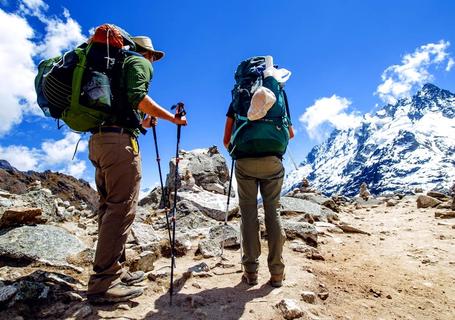 card-tag-title
card-tag-titleSalkantay Trek to Machu Picchu
5daysValencia Travel´s spectacular 5 Day Salkantay Trek to Machu Picchu. Read on to learn more about this epic Salkantay trek and book your Andean adventure now!
 card-tag-title30% off
card-tag-title30% offLares Trek to Machu Picchu
4daysOn this 4 day Machu Picchu Lares trek you'll get the chance to learn about the communities surrounded by mountain lakes & landscapes. Book with us today!
 card-tag-title
card-tag-titleLares Trek & Machu Picchu
7daysJoin Valencia Travel on this 7 Day Lares Trek and Machu Picchu combination tour for one of the best Peru cultural treks in Peru. Click here to book your Lares Trek today!
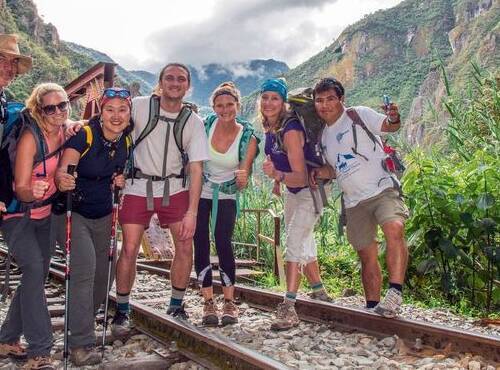 card-tag-title
card-tag-titleSalkantay Trek & Inca Trail to Machu Picchu
6daysOur 6 day Salkantay trek and Inca trail to Machu Picchu offer some of the most awe-inspiring views along 2 of the classic trekking trails in Peru. Book this trip with Valencia Travel Cusco!
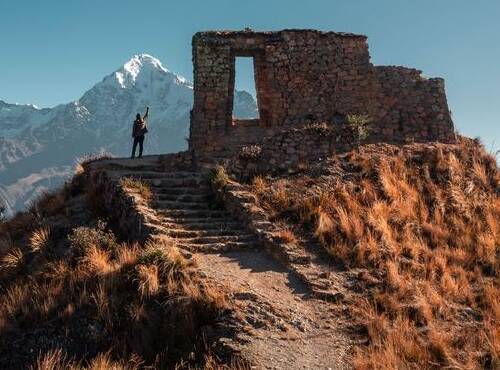 card-tag-title
card-tag-titleMoonstone Trek to Machu Picchu
5daysThis Moonstone trek to Machu Picchu is an almost unknown but very beautiful hike. Experience the beauty of Peru on this 5 day trek with Valencia Travel!
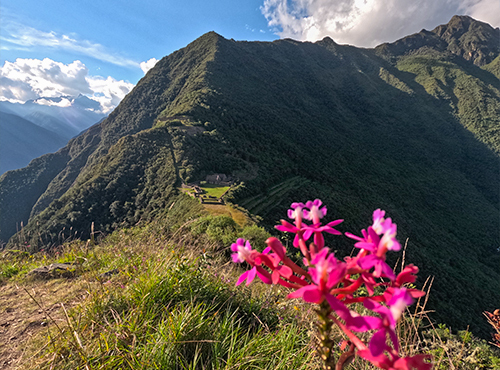 card-tag-title
card-tag-titleChoquequirao Trek to Machu Picchu
9daysValencia Travel invites you on the spectacular Choquequirao Trek to Machu Picchu. Learn more here about exploring ancient Incan sites with our experts.
 card-tag-title
card-tag-titleLares Trek to Machu Picchu - Private
4daysOn this private 4 day Lares trek to Machu Picchu, you can learn about the traditional communities and valley landscapes. Book this trip with Valencia Travel!
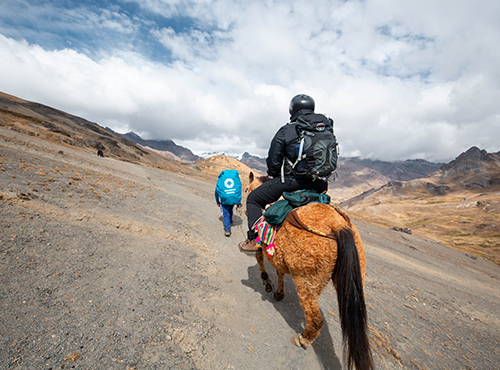 card-tag-title
card-tag-titleAusangate, Rainbow Mountain to Machu Picchu
7daysThis 7 day Ausangate Rainbow Mountain trek to Machu Picchu passes through snow-capped mountains, glaciers and crystalline lakes. Sign up with us today!
 card-tag-title
card-tag-titleChoquequirao Trek
4daysThis 4 day Choquequirao trek tour brings you through the site that was discovered by a French explorer in the 18th century. Book a trip with Valencia Travel!
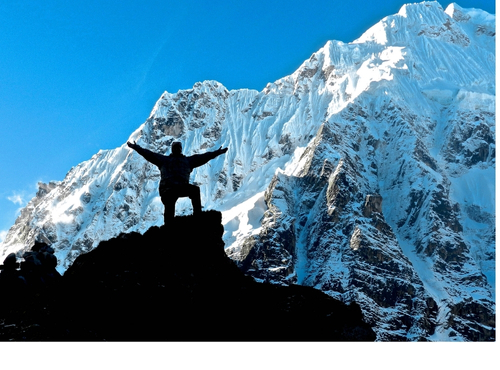 card-tag-title
card-tag-titleSalkantay Trek to Machu Picchu - Private
5daysOn this Private 5 day Salkantay trek to Machu Picchu we can appreciate the unique sight of the snow-capped Salkantay peak while en route to the Machu Picchu citadel. Enjoy a private service along this epic trekking route!
 card-tag-title
card-tag-titleVilcabamba Trek to Machu Picchu
5daysThe Vilcabamba trek to Machu Picchu is ideal for anyone who really wants to get away from it all and go where few have gone. Book this 5 day tour with us!
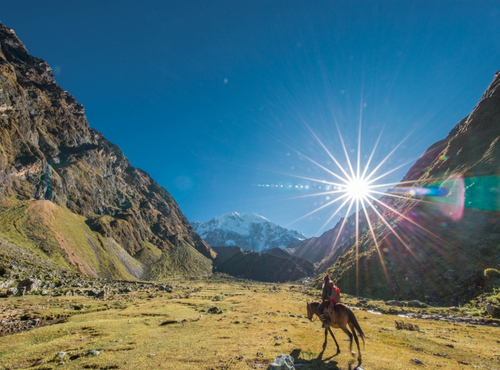 card-tag-title
card-tag-titleSalkantay Trek & Machu Picchu
8daysOur 8 day Salkantay trek to Machu Picchu hiking tour surrounds you with the beauty of The Andes in Peru! Check out more details at Valencia Travel Cusco today!
contant-us-title

specialist-box-title
Maria Diaz
specialist-box-phrase
RELATED TOURS
top-tours-tooltip
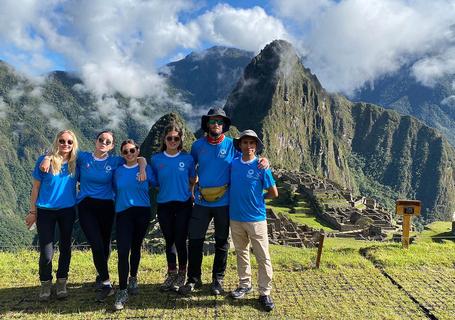
Classic Inca Trail
4dayscard-destinations-tag: Cusco, Inca Trail, Machu Picchu
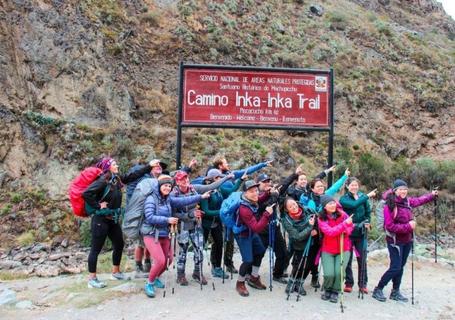
Trek Along the Inca Trail To Machu Picchu
7dayscard-destinations-tag: Cusco, Inca Trail, Machu Picchu
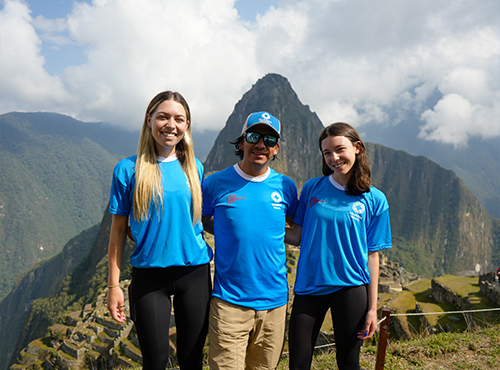
Inca Trail Express to Machu Picchu
5dayscard-destinations-tag: Cusco, Inca Trail, Machu Picchu
asso-info-tooltip


